The Smoothie Formula: Stop Guessing and Start Blending Like a Pro
I’ve spent the better part of my career in professional kitchens, from the fast-paced service line to developing menus for health-focused cafes. In that time, I’ve probably made tens of thousands of smoothies. I’ve seen what works, what falls apart, and the common mistakes that most people make at home.
In this article
Honestly, most online recipes get it wrong. They treat a smoothie like a dessert, throwing in a ton of fruit and calling it a day. The result? A sugar bomb that leaves you hungry an hour later. That’s not a meal; it’s a mistake.
A truly great smoothie is a different beast entirely. It’s balanced, it’s satisfying, and it’s built with intention. I’m not here to just give you a list of recipes to follow blindly. I want to teach you the framework—the ‘why’ behind every ingredient. Once you get this down, you can create endless amazing smoothies that are both delicious and genuinely good for you.
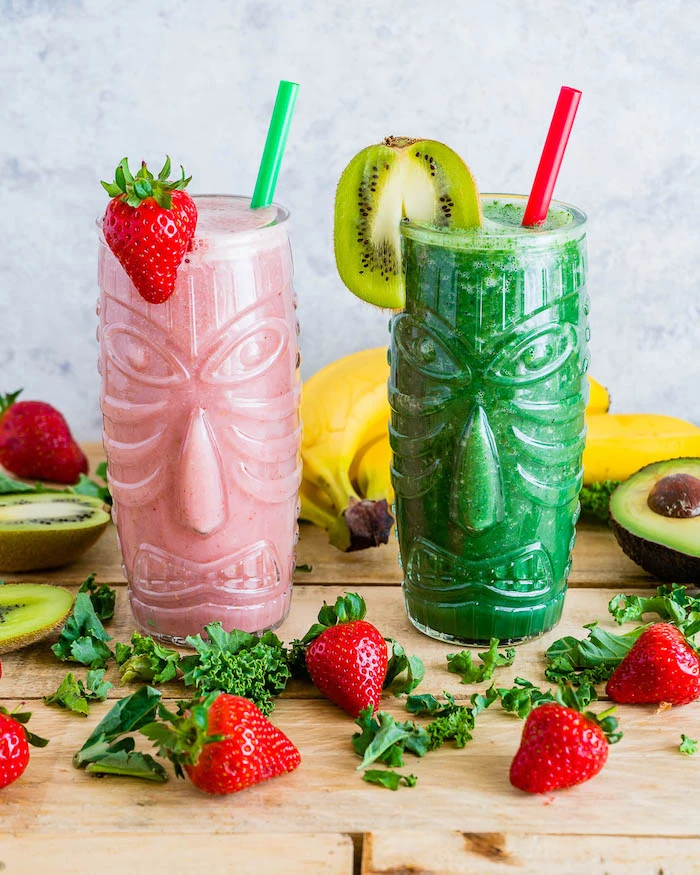
Let’s Geek Out for a Second: The ‘Why’ Behind a Good Smoothie
Before you even plug in the blender, let’s talk about what makes a smoothie work. It’s all about balance. The goal is to get a steady release of energy, not a sugar rush followed by a crash. To do that, every smoothie needs three key things: protein, healthy fat, and fiber-rich carbs. This is the non-negotiable foundation.
- Carbohydrates: These are your energy source, and they come from fruits and veggies. By using whole fruits instead of juice, you get all the amazing fiber, which slows down sugar absorption. No spikes, no crashes.
- Protein: This is what turns your smoothie from a snack into a real meal. It keeps you feeling full and is crucial for muscle repair. Think Greek yogurt, a quality protein powder, or even something like silken tofu.
- Healthy Fat: Fat is not the enemy! It’s essential for absorbing certain vitamins (like A, D, and E) and adds to that long-lasting feeling of fullness. We’re talking about a spoonful of almond butter, half an avocado, or some chia seeds. That dollop of fat isn’t just for flavor; it’s unlocking the nutrients in your greens.
And let’s not forget fiber. It’s probably the most underrated part of a great smoothie. Things like oats, chia seeds, and leafy greens provide the bulk that keeps your digestive system happy and your energy stable. This is exactly why blending a whole apple is worlds better than just pouring in apple juice.
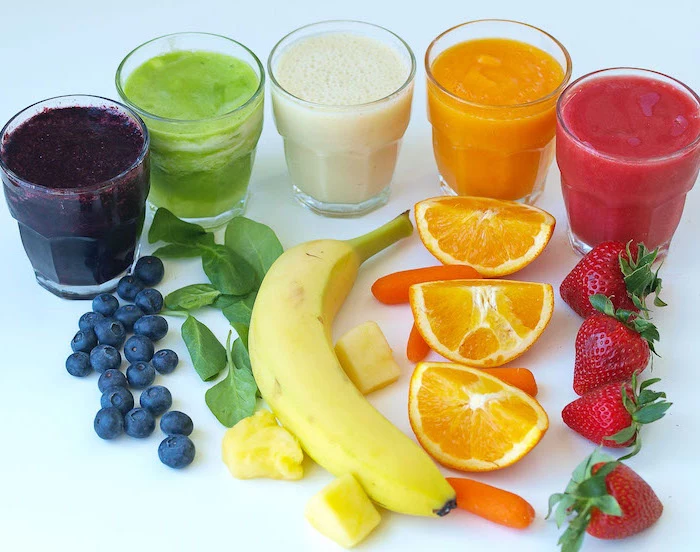
Pro Techniques for a Perfect Texture, Every Time
The texture is what separates a homemade smoothie from a cafe-quality one. A gritty, warm, or separated smoothie is just a sad experience. Here’s how the pros guarantee a perfect result.
The Art of Layering (Yes, It Matters!)
How you load your blender makes a huge difference. If you do it wrong, an air pocket can form around the blades, and nothing will blend. We followed this rule religiously in the cafe to keep our expensive machines from burning out and to get a creamier result, faster.
Here’s the correct order:
- Liquids First: Pour in your water, milk, or coconut water. This gives the blades something to grab onto right away.
- Powders & Greens Next: Add your protein powders, spices, and leafy greens like spinach.
- Soft & Creamy Stuff: Now add things like yogurt, nut butters, or avocado.
- Frozen & Hard Ingredients Last: Finish with your frozen fruit and ice. Their weight helps push everything down into the blades.
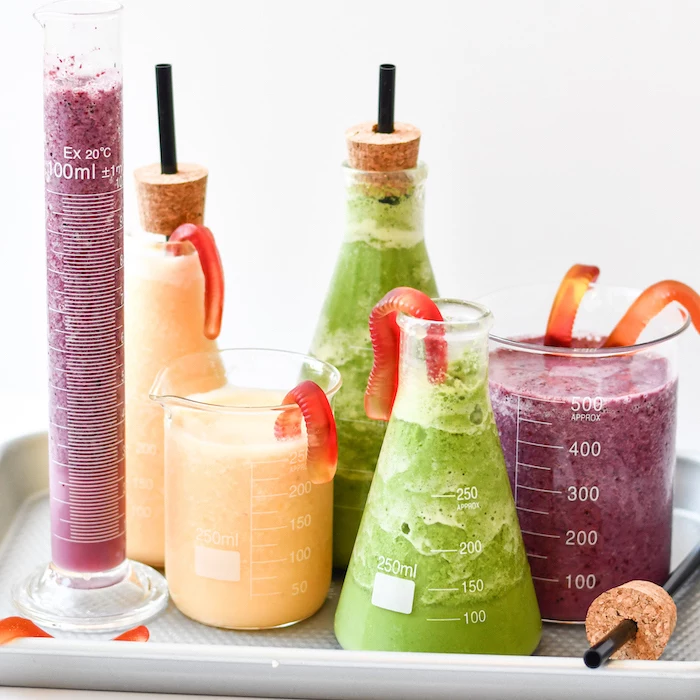
Blenders, Temperature, and a Cleanup Hack
Let’s talk blenders. A high-powered machine like a Vitamix or Blendtec is amazing, no doubt. They pulverize anything into a silky liquid. An investment like that can run you $400 or more. But to be frank, you don’t need one to get started. A model from Ninja or Nutribullet, often for under $100, has incredible power for most home needs. Don’t let the blender stop you!
Quick Tip: If you have a standard blender, just give it a little help. Blend your leafy greens with the liquid first to break them down before adding the rest of your ingredients.
Temperature is also key. A smoothie should be cold. The best way to achieve this is by using frozen fruit. It makes the smoothie thick and creamy without watering it down like ice can. I try to use at least one frozen element in every single smoothie.
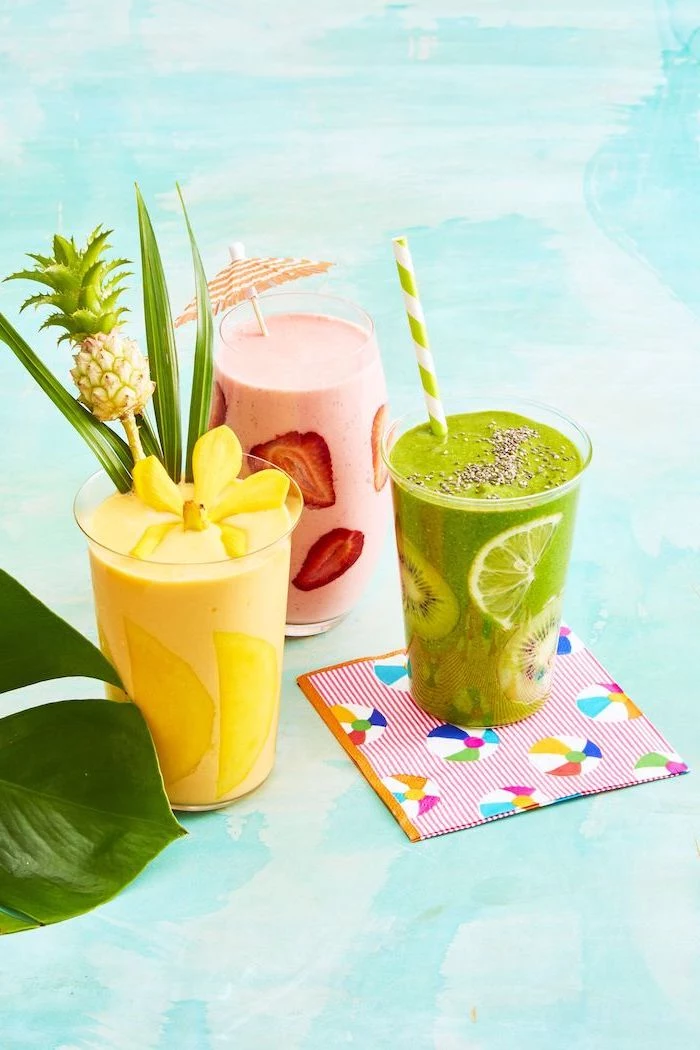
Oh, and my all-time favorite kitchen hack for cleanup? As soon as you’ve poured your smoothie, don’t even let the blender leave the counter. Add a cup of warm water and a single drop of dish soap, put the lid back on, and blend on high for 30 seconds. Rinse it out, and you’re done. No scrubbing required!
The Building Blocks: Smoothie Frameworks
Instead of just a list of recipes, here are the foundational frameworks I use. Learn the ratios, then swap ingredients based on what you love and what you have on hand.
Framework 1: The Everyday Green Machine
This is your daily driver. It’s balanced, not too sweet, and packed with nutrients.
- Liquid Base (1 to 1.5 cups): Water or unsweetened almond milk.
- Greens (1-2 large handfuls): Spinach is a great starting point because you can’t taste it.
- Creamy Element (1/2 serving): 1/2 a frozen banana or 1/2 an avocado.
- Fruit (1/2 to 1 cup): Frozen berries or a green apple work great.
- Booster (1 tbsp): Chia or ground flax seeds (usually in the baking or health food aisle).
Pro Cost Tip: Making this at home will run you about $2.50. Ordering a similar smoothie at a cafe? You’re looking at $9 or more. That’s a huge savings.
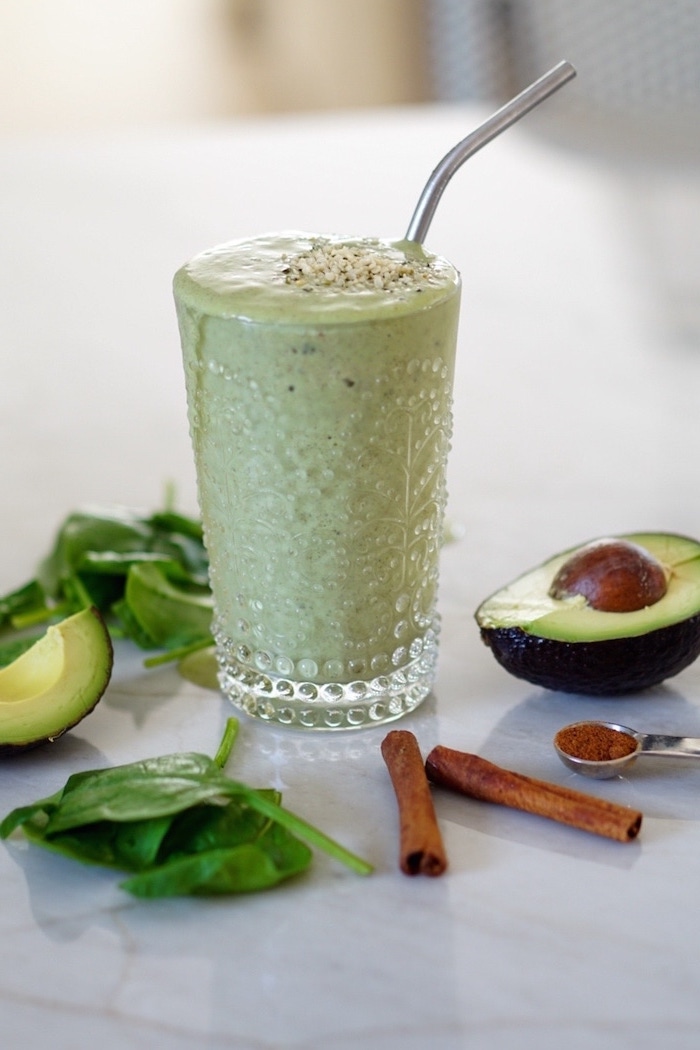
Framework 2: The Post-Workout Recovery Shake
This one is designed to refuel your muscles and replenish your energy after a tough workout.
- Liquid Base (1.5 cups): Dairy milk or a high-protein plant milk like soy.
- Protein (20-30g): 1 scoop of protein powder. Use whatever you prefer—whey is great for quick absorption, but a plant-based blend (like pea and rice) works just as well.
- Carbs (1 serving): A whole frozen banana is perfect here.
- Healthy Fat (1 tbsp): A spoonful of peanut butter or a sprinkle of hemp hearts.
Framework 3: The True Meal Replacement
This is the big one, designed to keep you genuinely full for 4-5 hours. The key is more protein, fat, and fiber.
- Liquid Base (1 cup): Unsweetened plant milk.
- Protein (30g+): 1.5 scoops of protein powder or 1 cup of Greek yogurt.
- Healthy Fat (2 servings): 1/2 avocado PLUS 1 tbsp of almond butter.
- Fiber Source (1-2 tbsp): Rolled oats or psyllium husk. (Let these soak in the liquid for a few minutes before blending to soften them up).
- Greens & Fruit: A big handful of kale and 1/2 cup of frozen mixed berries.
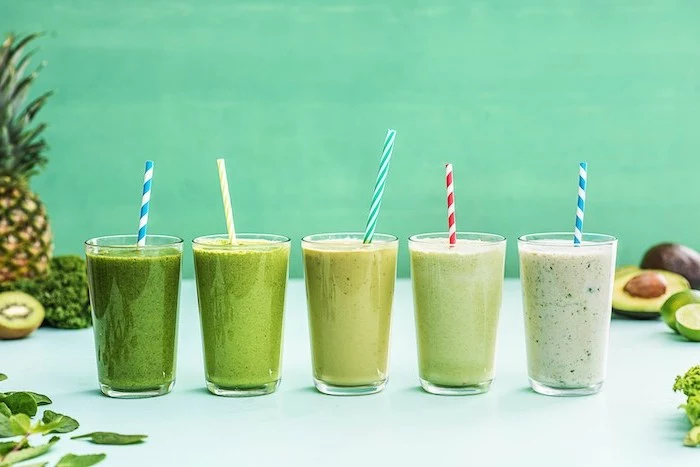
Troubleshooting Common Smoothie Problems
Once you’ve got the basics down, you can start tweaking. Here’s how to fix common issues.
Problem: It tastes too “grassy” or bitter.
This is a classic green smoothie problem. The fix is to balance it with acidity or sweetness. A quick squeeze of lemon or lime juice works wonders to brighten everything up. If it’s bitterness from something strong like kale, a single date or a small chunk of pineapple will smooth it right out.
Problem: It’s just… boring.
Time to add some depth! A pinch of cinnamon or nutmeg can add incredible warmth. For a rich, chocolatey flavor without sugar, try a teaspoon of raw cacao powder. And here’s a real pro secret: a tiny pinch of sea salt won’t make your smoothie salty. It will actually enhance the natural sweetness of the fruit.
A Word on Meal Prep
To save time, I highly recommend making ‘smoothie packs.’ Just portion out your frozen fruit, greens, powders, and seeds into individual freezer bags. In the morning, all you do is dump a pack into the blender, add your liquid, and hit the button. It’s a game-changer.
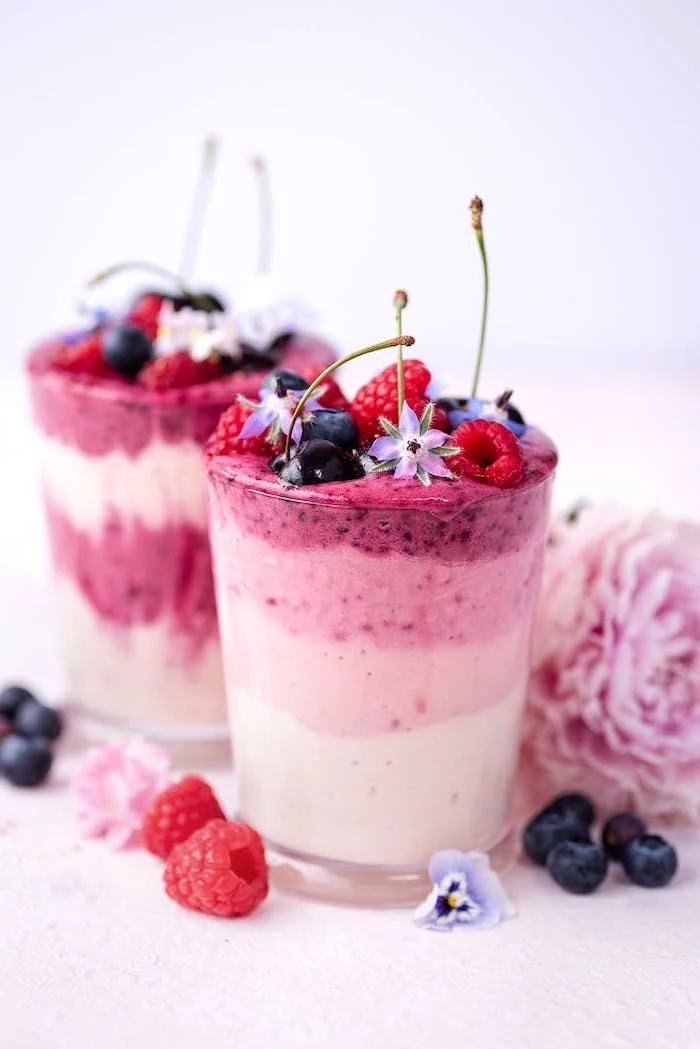
Now, I know you’re tempted to blend your smoothie the night before. I really don’t recommend it—it will separate, and some nutrients will degrade. But, I get it, sometimes life is just too hectic. If you absolutely must pre-blend, here’s the damage control: store it in a glass jar, filled to the very top to reduce air contact. Seal it tight. Before you drink it, shake it like crazy to mix it all back together. It’s not ideal, but it’s way better than skipping breakfast!
A Quick, Important Warning
Heads up! It is incredibly easy to make a so-called “health” smoothie that’s packed with sugar. If you’re using fruit juice, multiple servings of high-sugar fruits (like mango and pineapple), and sweetened yogurt, you can easily top 50 grams of sugar. Always be mindful of your portions and balance the fruit with plenty of protein, fat, and fiber.
Also, if you have specific health conditions like kidney or thyroid issues, or are managing diabetes, it’s always best to chat with a doctor or registered dietitian about what ingredients are right for you. This guide is for educational purposes, not medical advice.
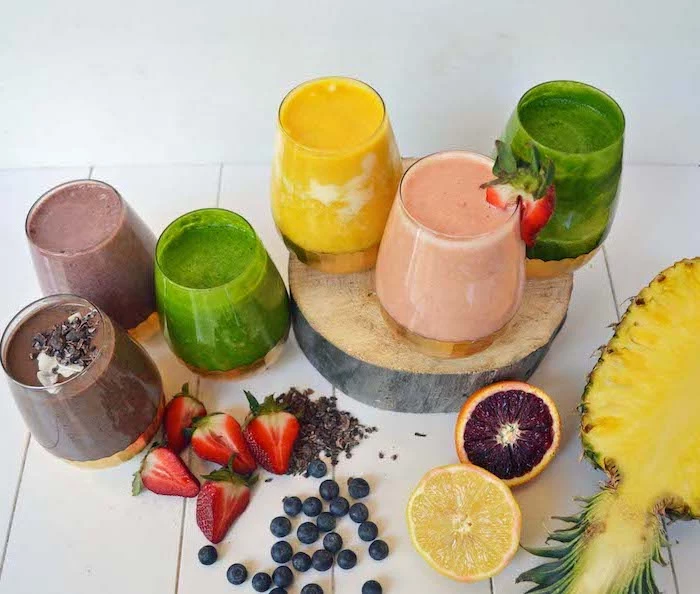
Building a better smoothie is a skill, and it’s one of the best investments you can make in your health. Start with these frameworks, pay attention to how you feel, and start experimenting. You’ve got the knowledge now. Go blend with confidence!
Inspiration Gallery
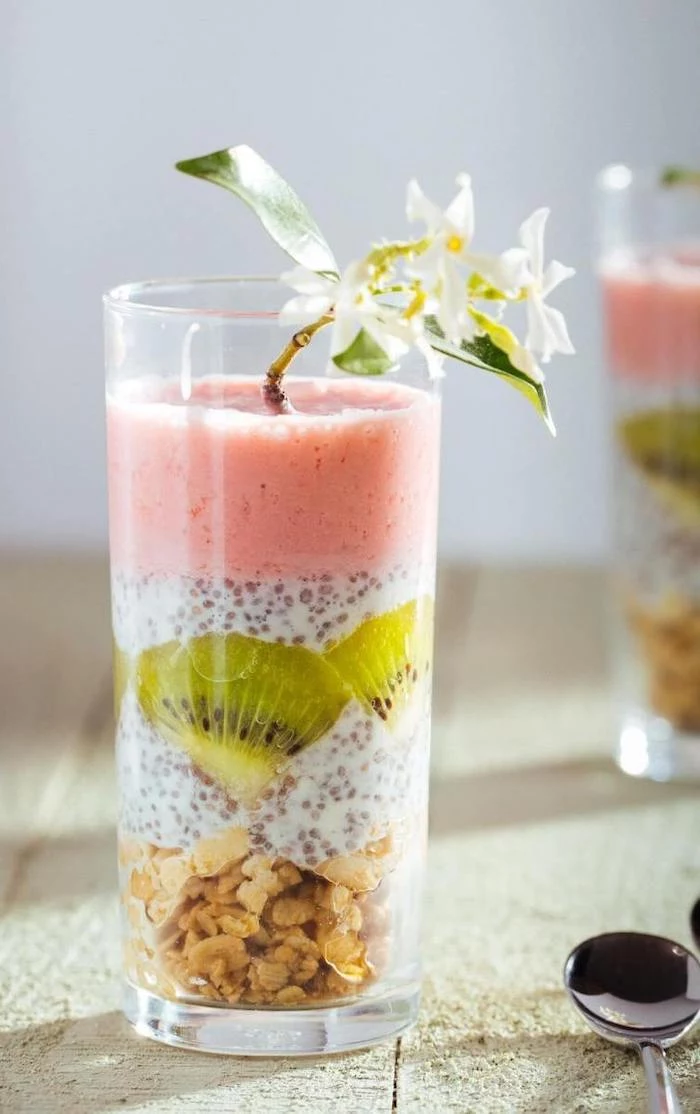
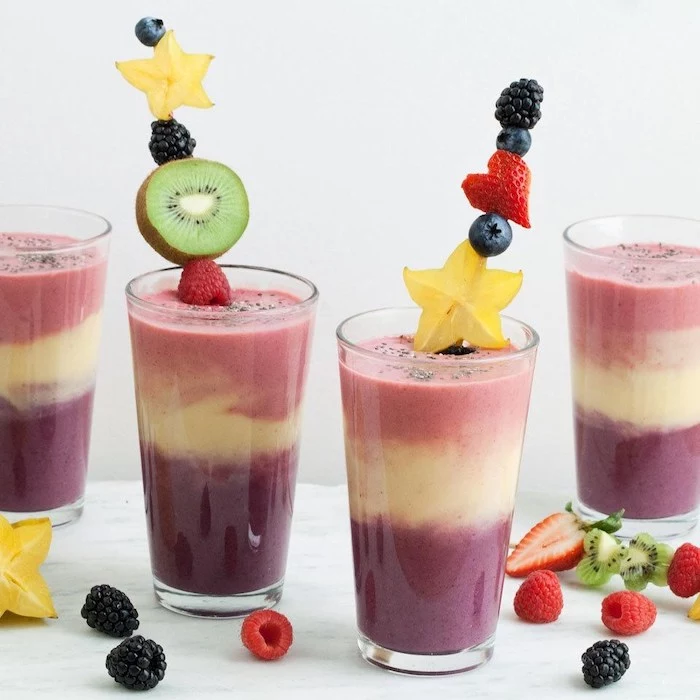
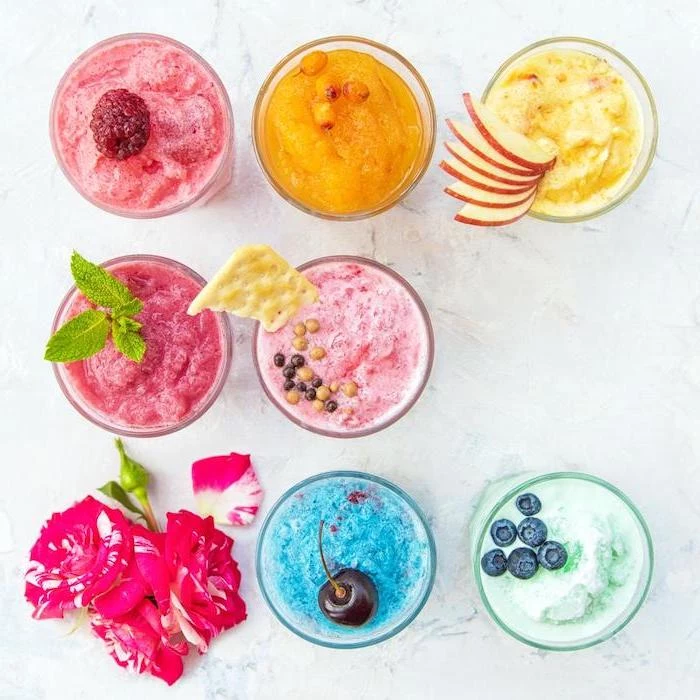
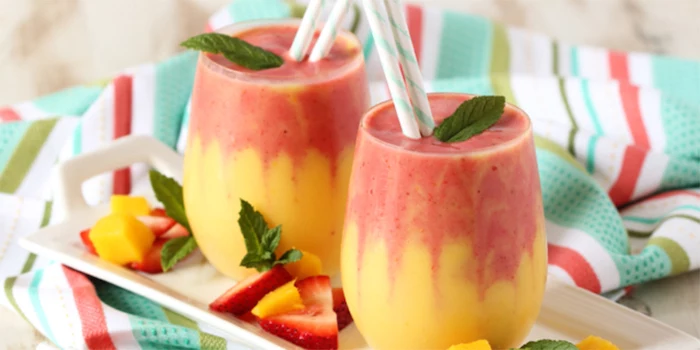
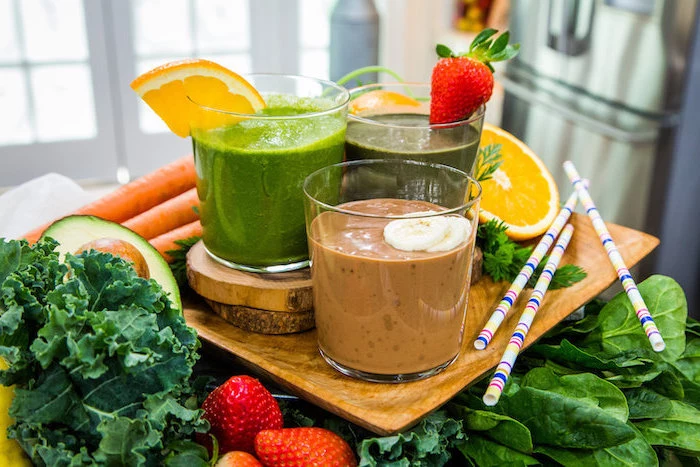
Choosing your blending companion is key. For perfectly silky textures, especially with tough ingredients like kale or nuts, a high-speed blender like a Vitamix or Blendtec is an investment in creaminess. For single servings and simpler blends, a personal blender like a NutriBullet gets the job done quickly and with less cleanup.
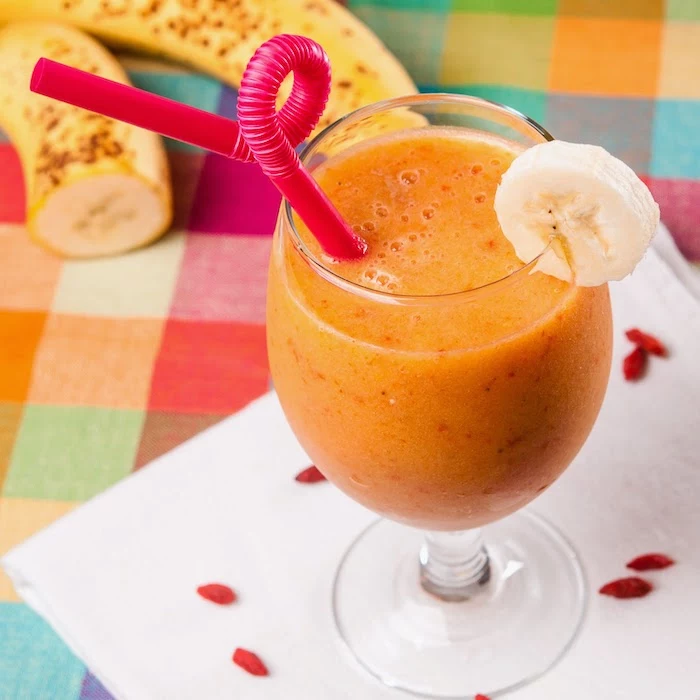
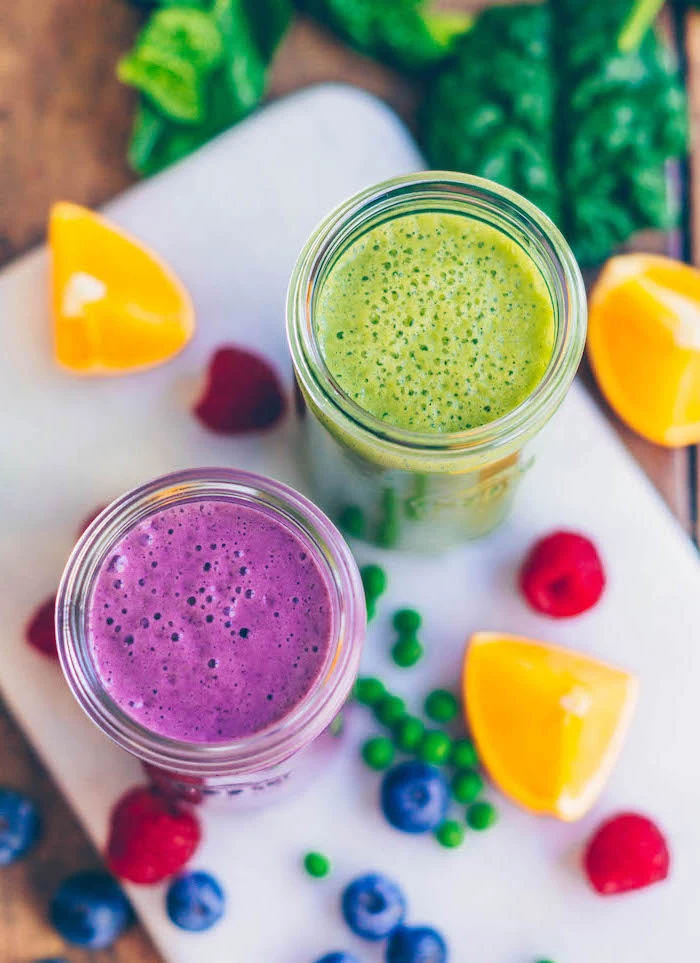
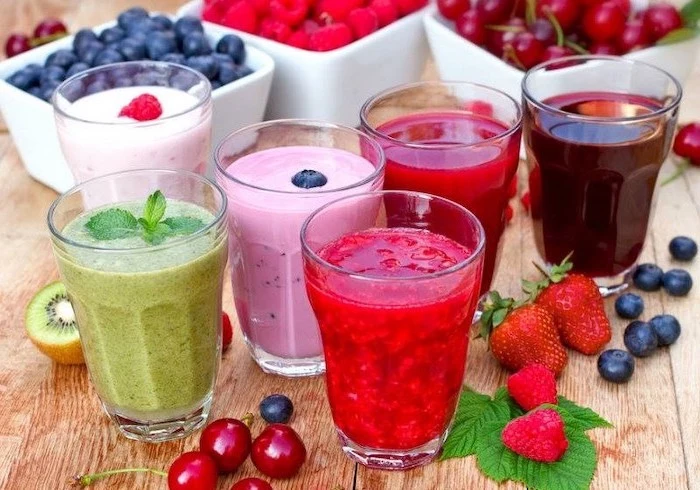
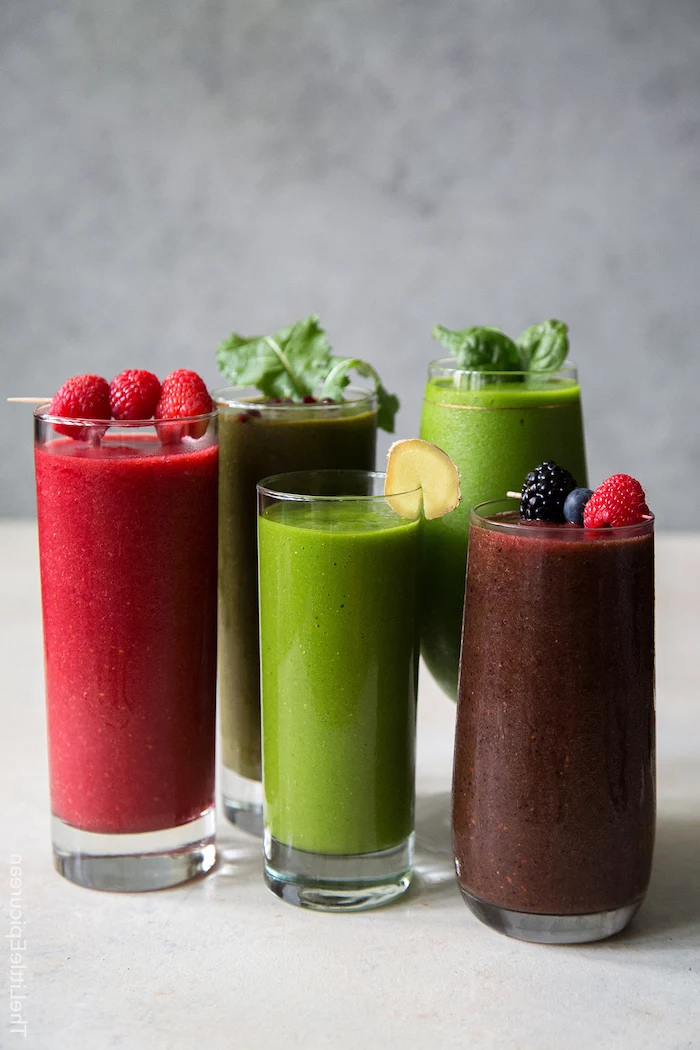
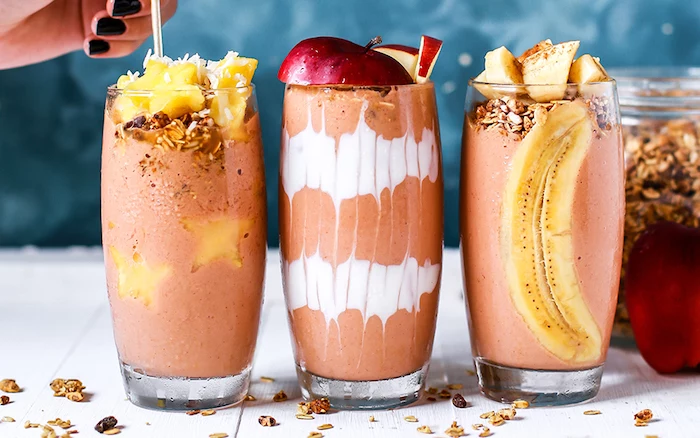
The Temperature Trick: A common mistake is letting your smoothie get lukewarm from the friction of the blender blades. Always use at least one frozen element—be it your banana, berries, or mango chunks. This ensures a refreshingly cold, thick consistency right out of the pitcher.
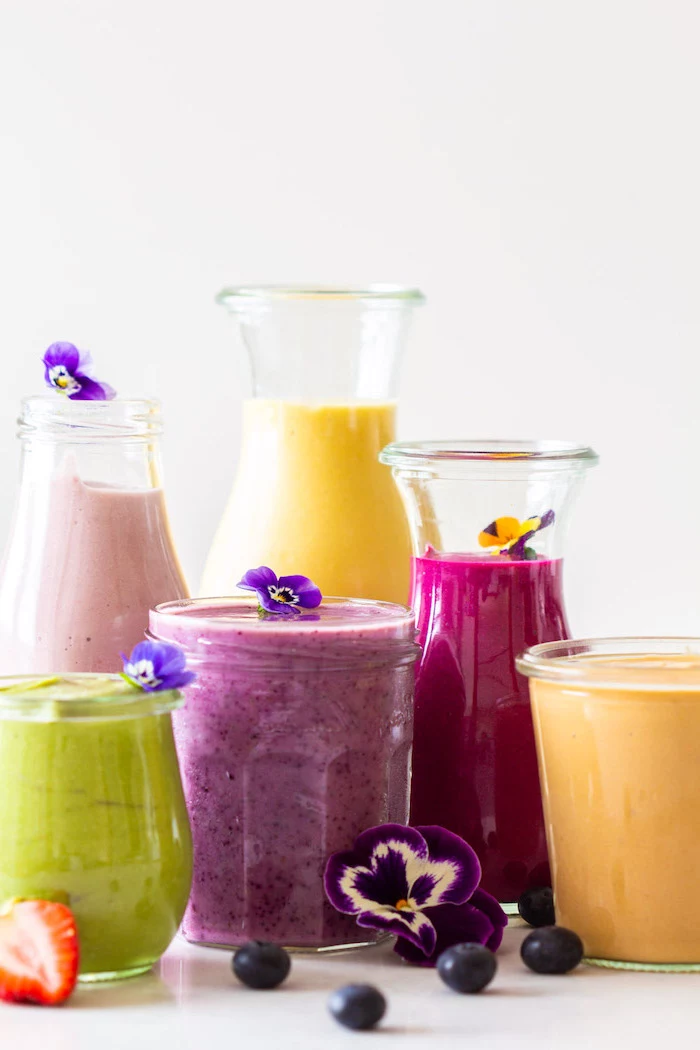
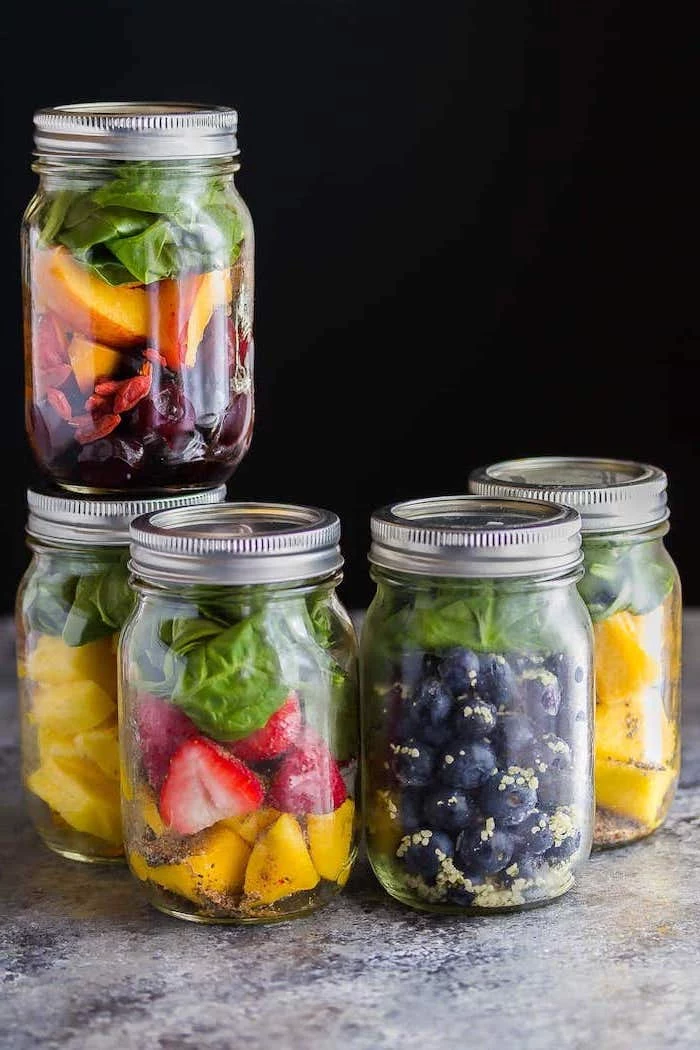
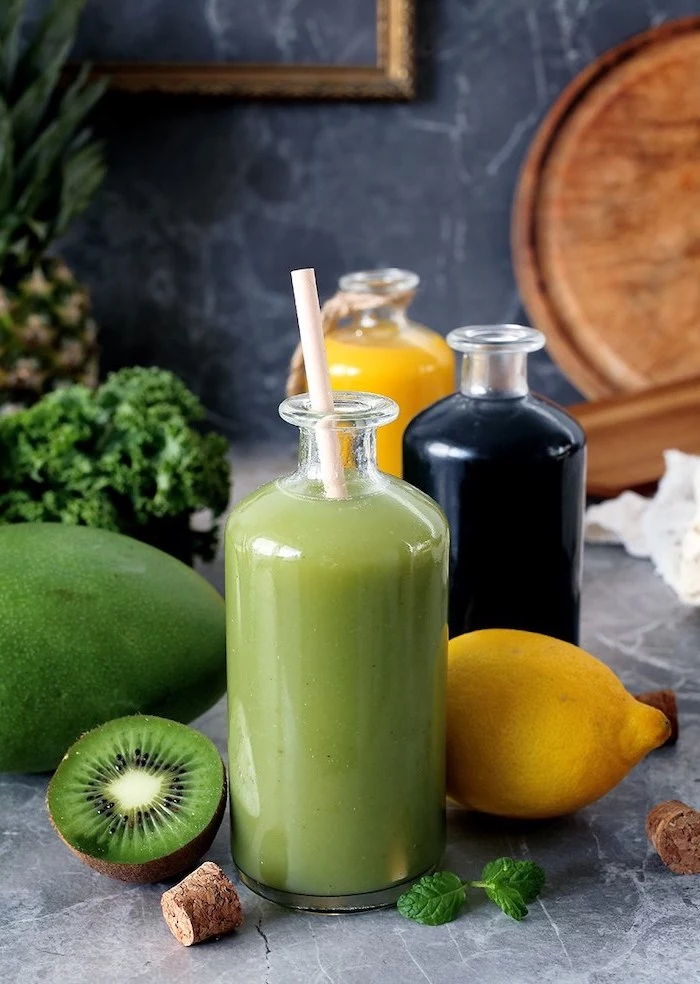


- Create ‘smoothie packs’ for the week.
- Portion your fruits, greens (like spinach), and dry boosts (chia seeds, protein powder) into individual reusable bags or containers.
- Store them in the freezer.
The secret to a 5-minute morning? Just grab a pack, add your liquid of choice, and blend. No chopping, no measuring, no excuses.
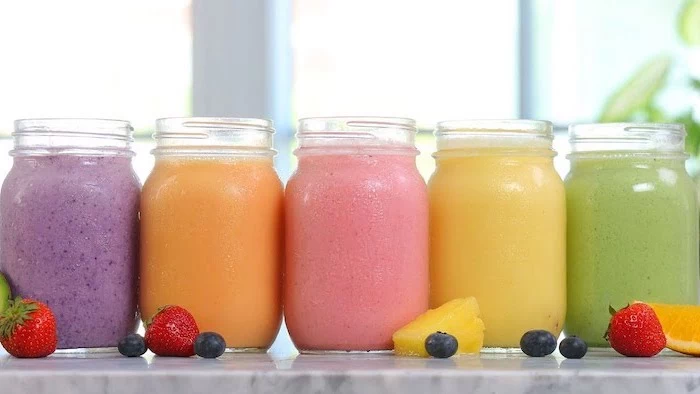
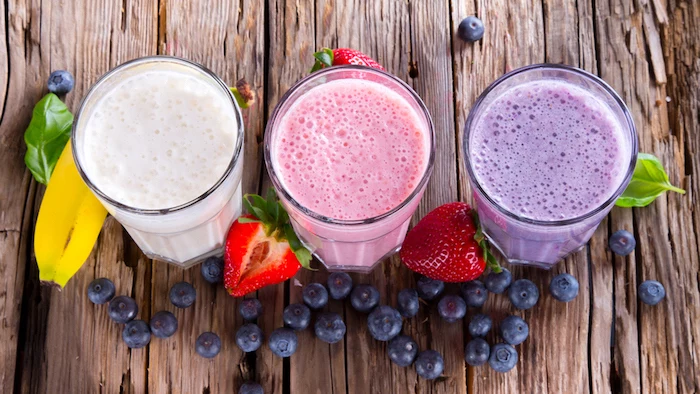
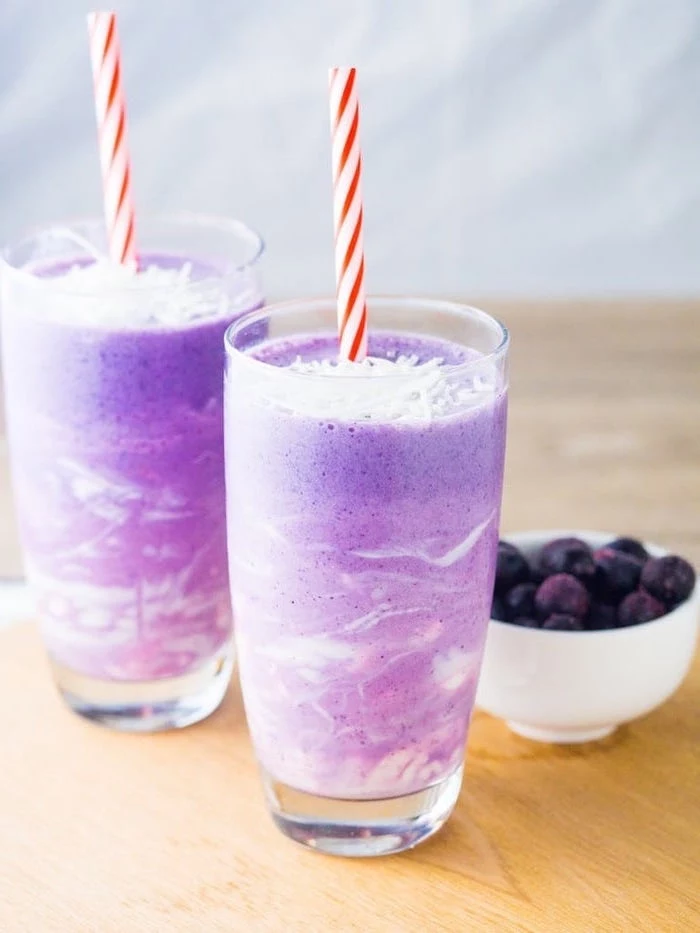
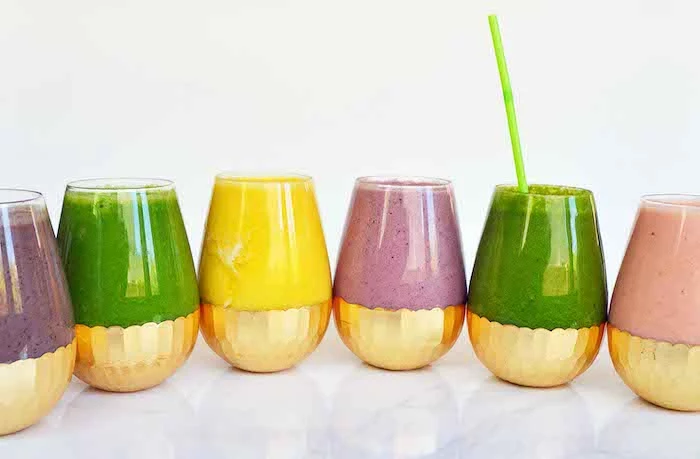
Just one tablespoon of chia seeds can absorb up to 12 times its weight in liquid.
This isn’t just a fun fact; it’s your secret weapon for a thick, satisfying smoothie that keeps you full for hours. Add them before you blend to let them work their gelling magic, providing soluble fiber and a pudding-like texture.
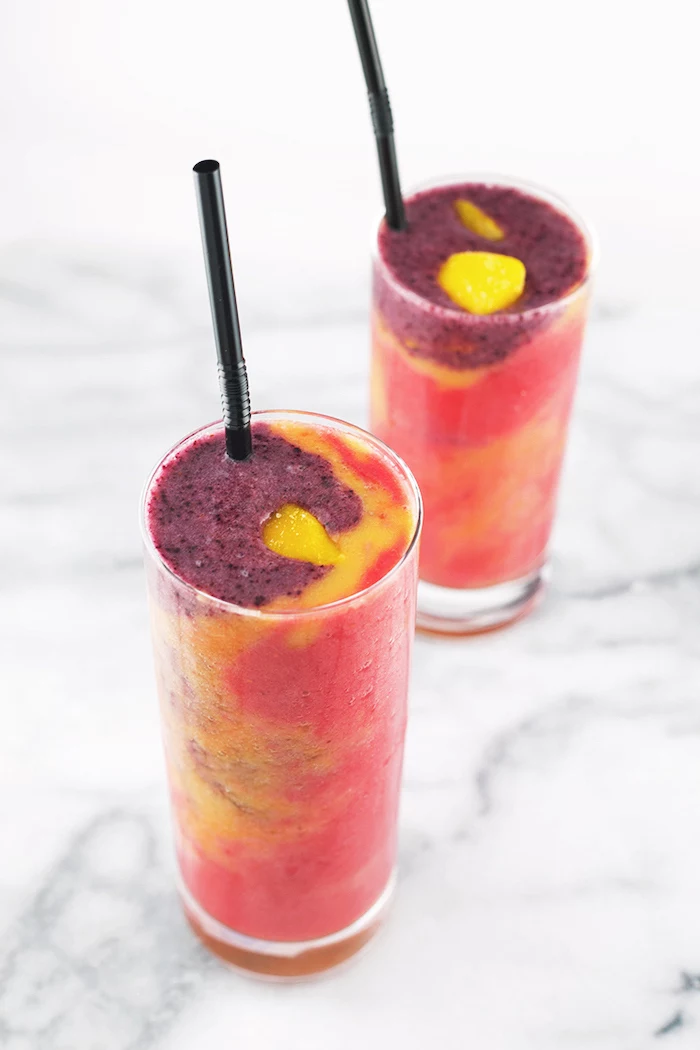
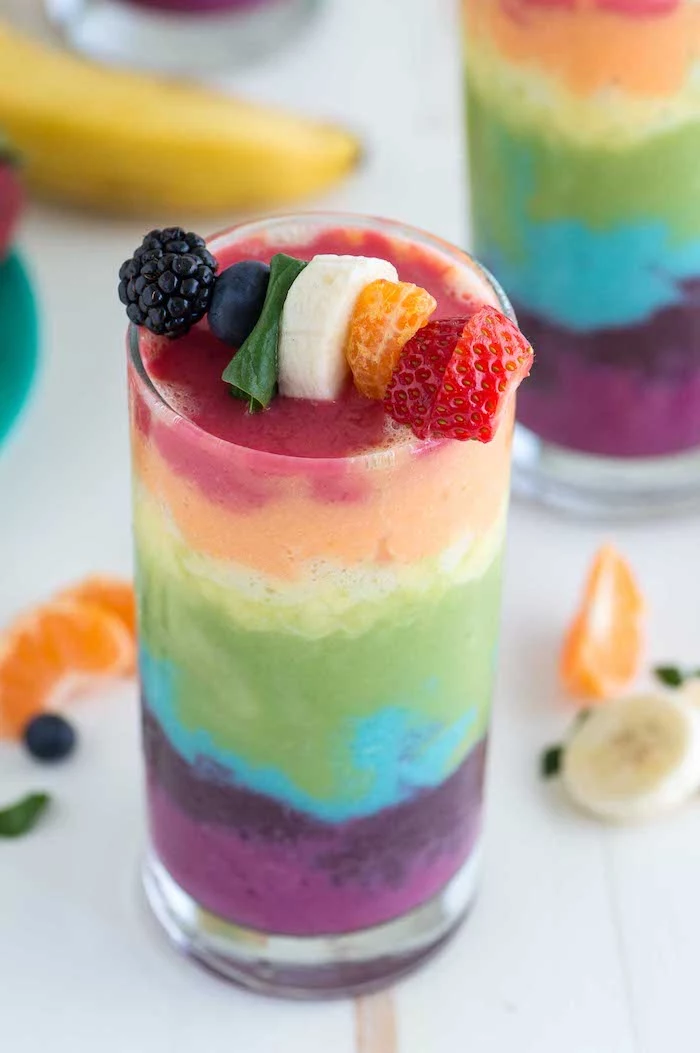
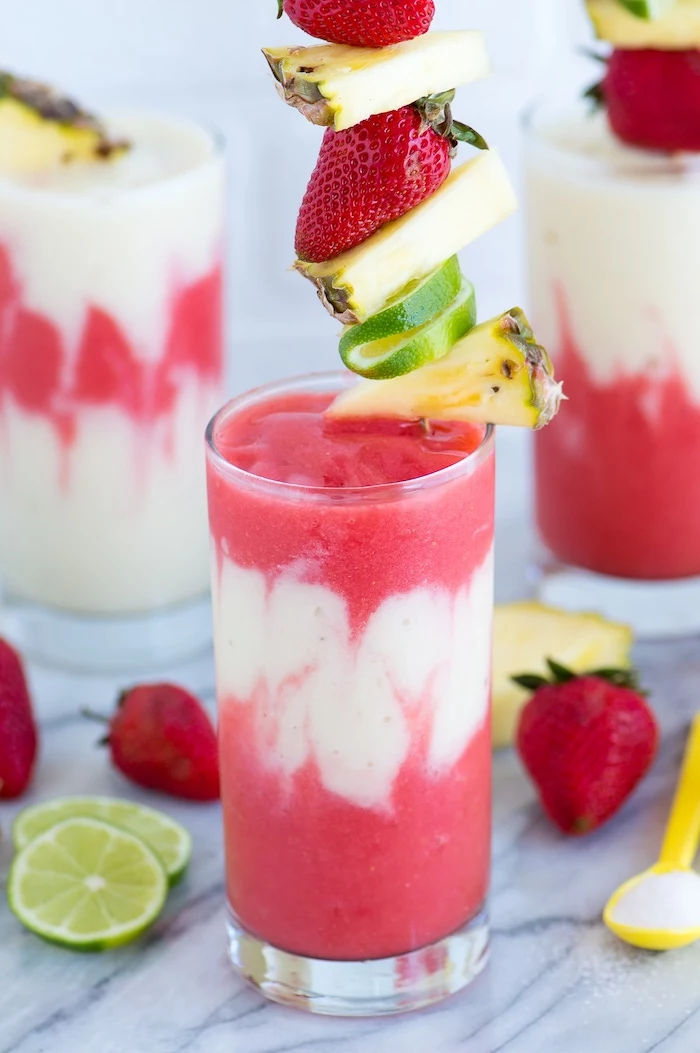
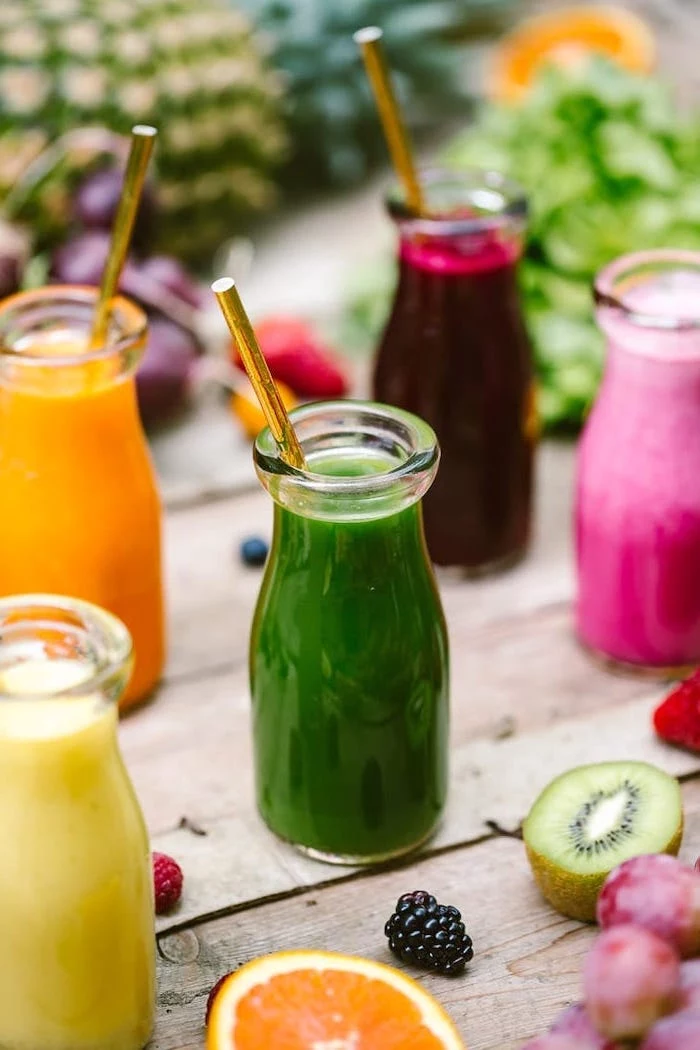
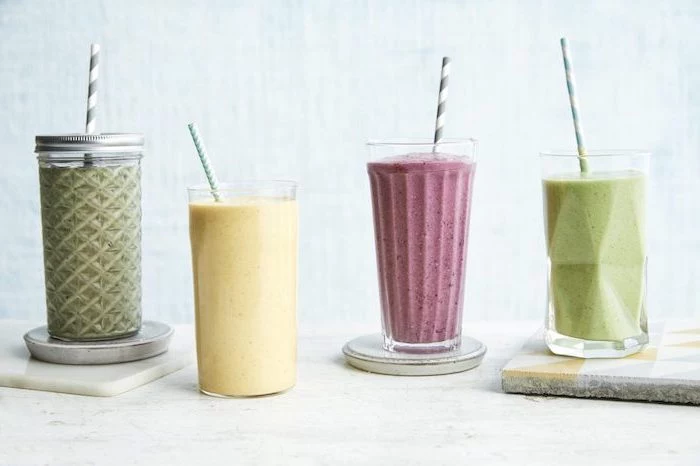
Why is my green smoothie a murky brown?
It’s a simple color theory problem! Mixing greens (like spinach or kale) with dark berries (like blueberries or blackberries) inevitably creates a less-than-appetizing brownish hue. To keep your greens vibrant, pair them with light-colored fruits: pineapple, mango, banana, and a squeeze of lime.
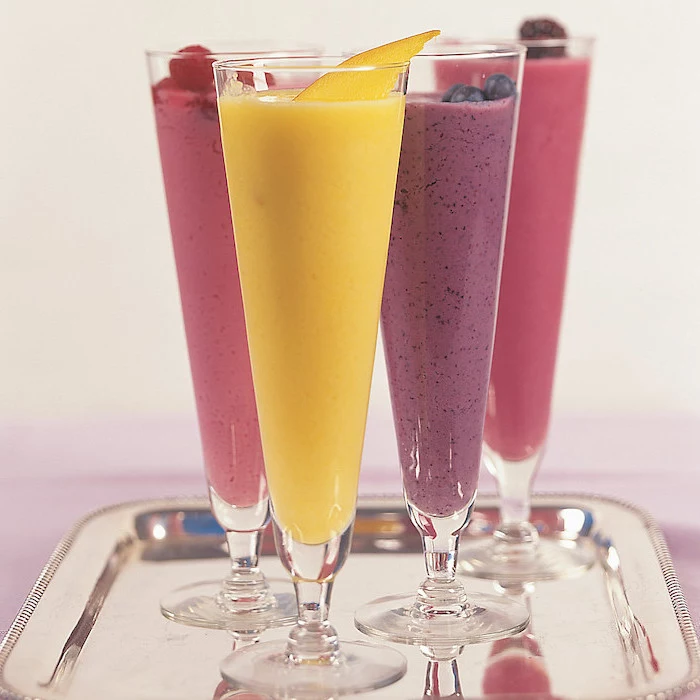
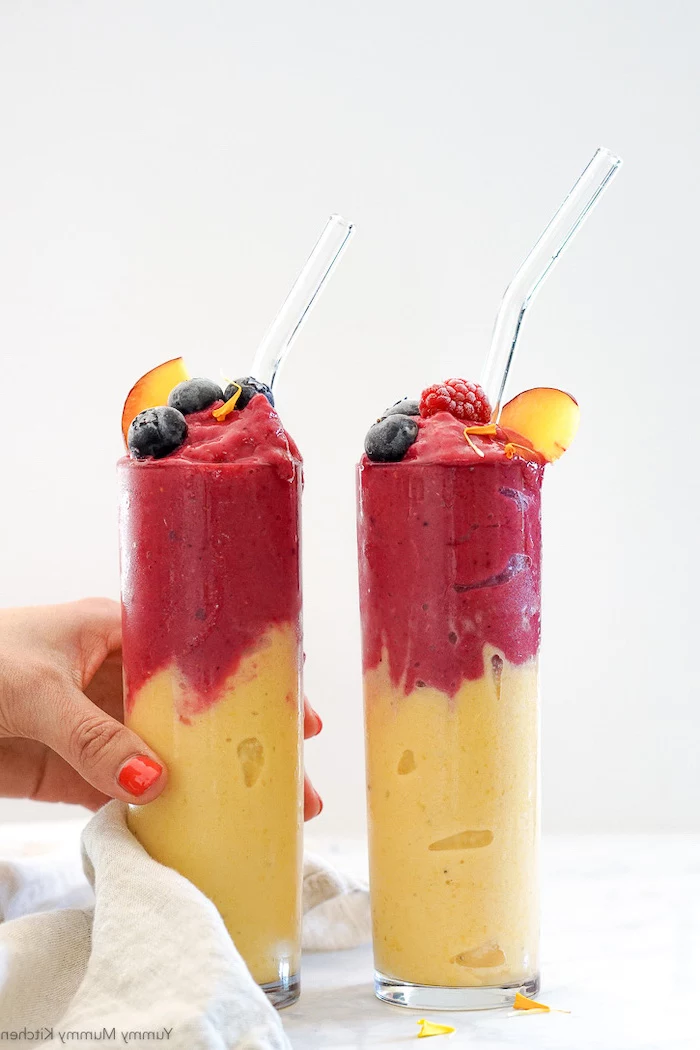
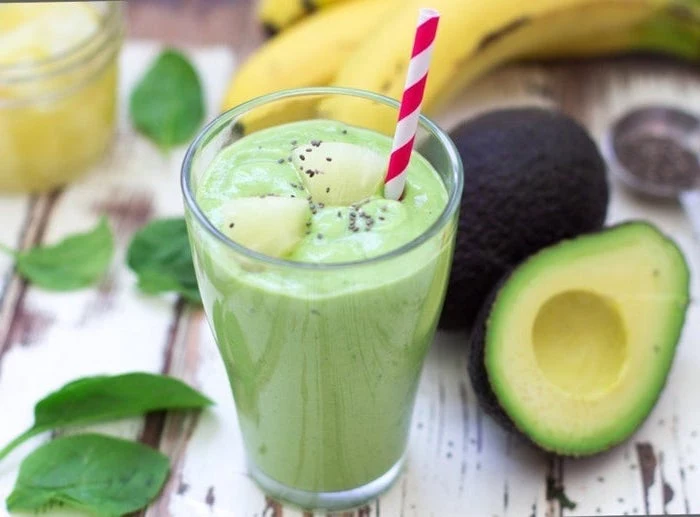
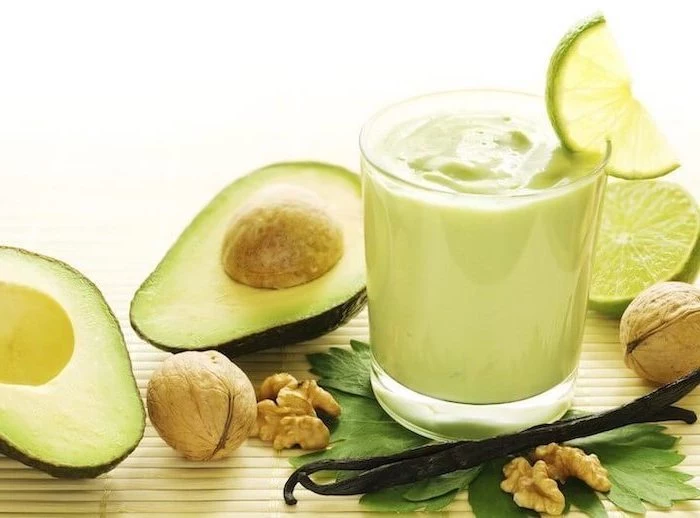
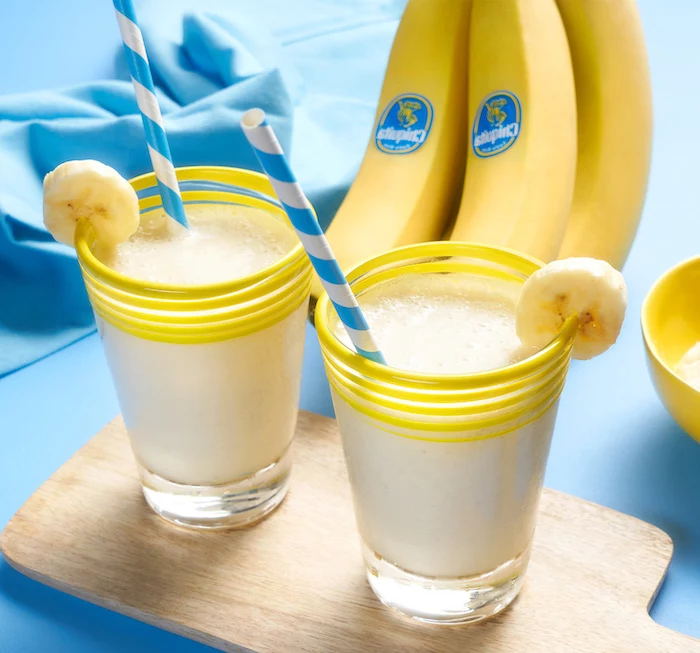
The art of the layered smoothie, like those you see in fancy cafes, is easier than it looks. The key is varying the density of your blends.
- Start with your thickest blend at the bottom (e.g., a mix with frozen banana and avocado).
- Gently pour your next, slightly thinner layer on top over the back of a spoon to soften the pour.
- A good combination is a thick berry base followed by a lighter mango or spinach blend.
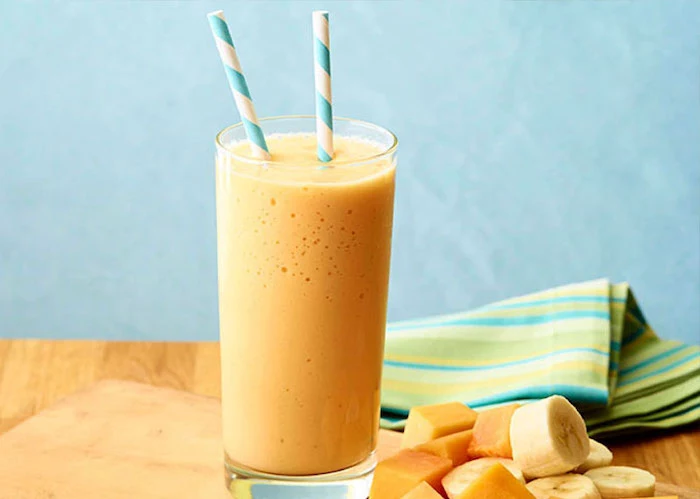

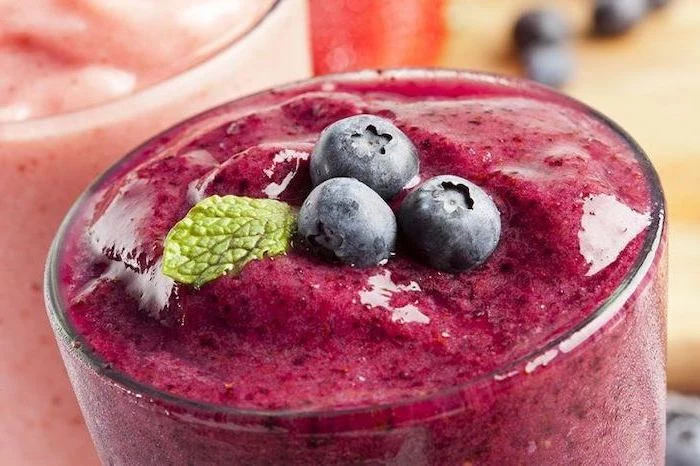
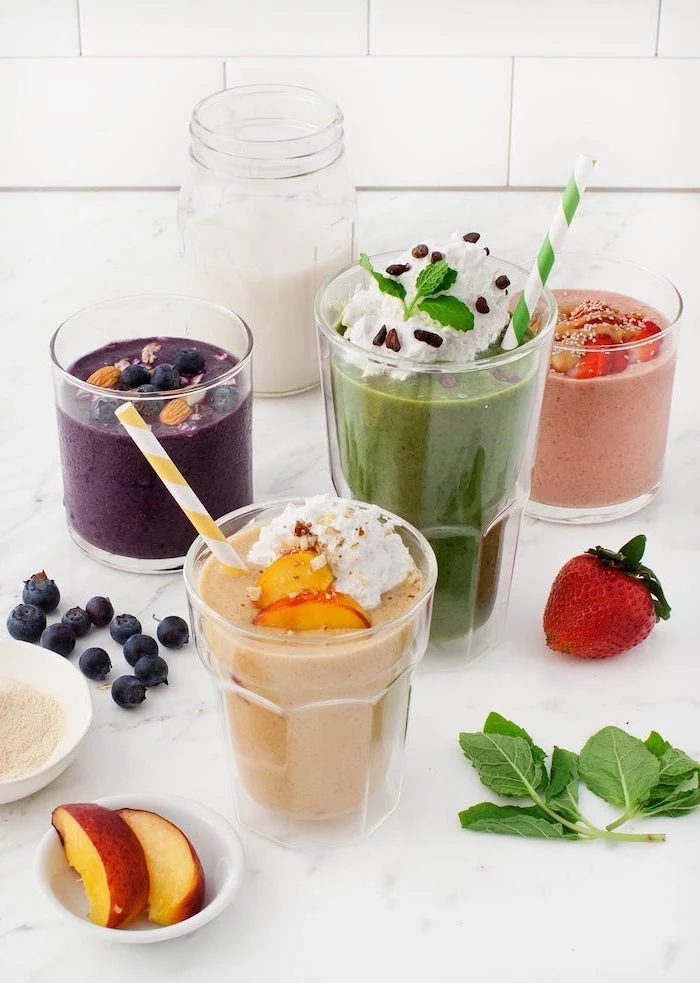
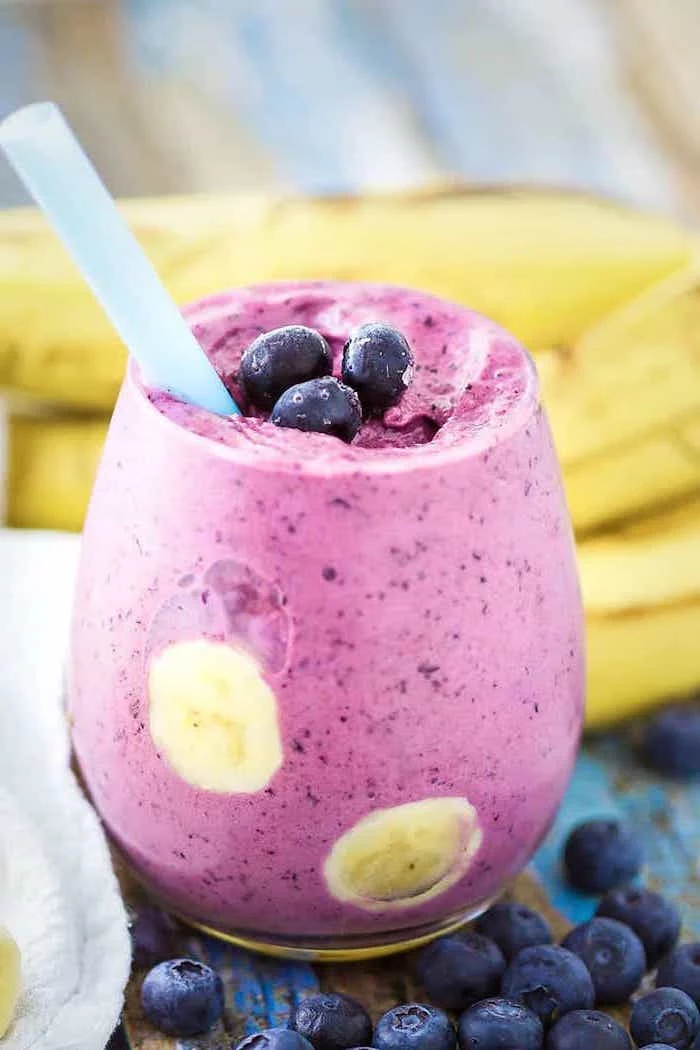
Whey Protein: Fast-absorbing and great for post-workout recovery. Can sometimes have a distinct dairy flavor. Optimum Nutrition Gold Standard is a popular choice.
Plant-Based Protein: Often a blend of pea, rice, or hemp. Easier to digest for some and vegan-friendly. Brands like Vega or Garden of Life offer great-tasting, non-gritty options.
For a neutral taste that won’t fight your fruit, a simple pea protein isolate is often the best plant-based choice.
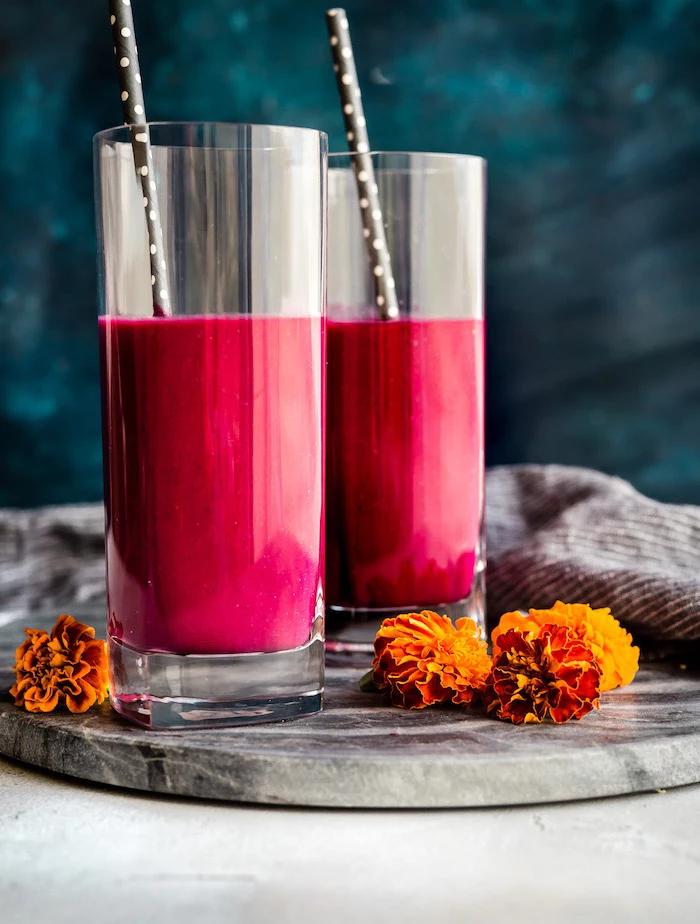
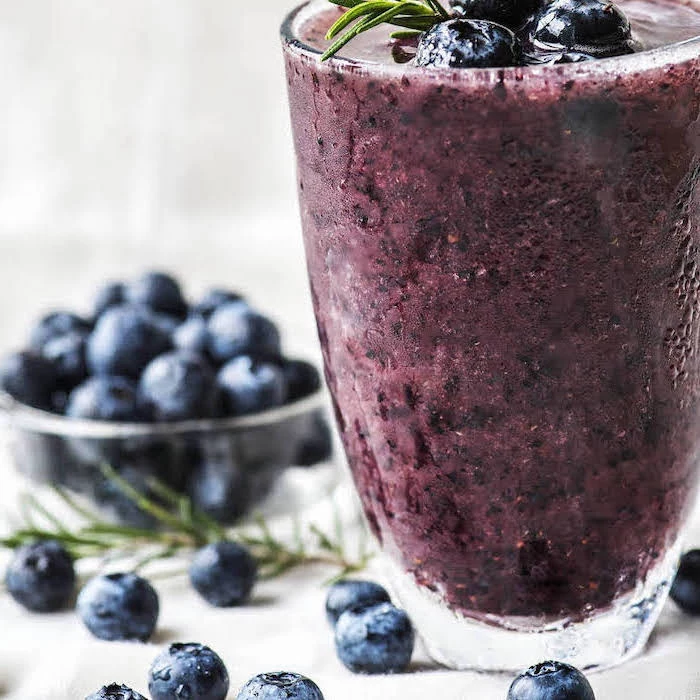

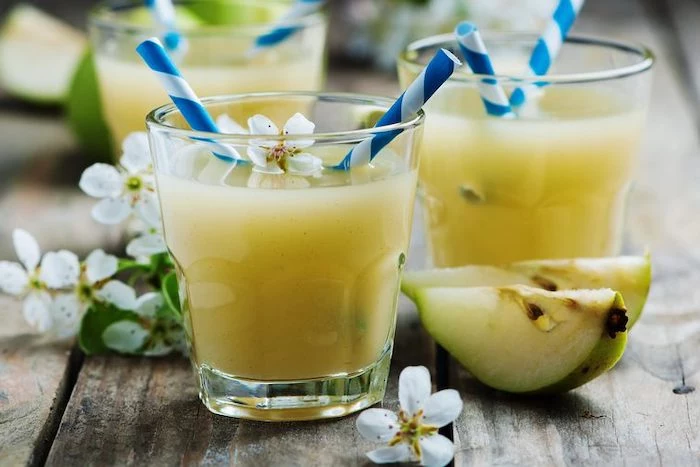
The average American diet is surprisingly low in potassium, an electrolyte crucial for fluid balance and muscle function.
Forget supplements. A single medium banana provides about 10% of your daily potassium needs, while a cup of coconut water can add another 13%. Combining them in your smoothie is a natural, delicious way to replenish after a workout or on a hot day.
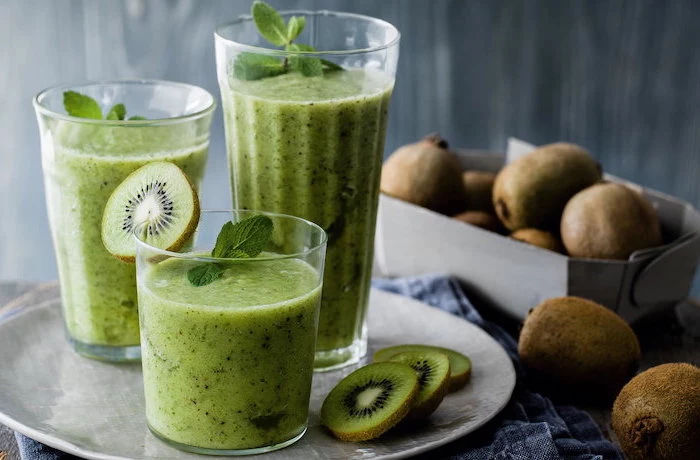
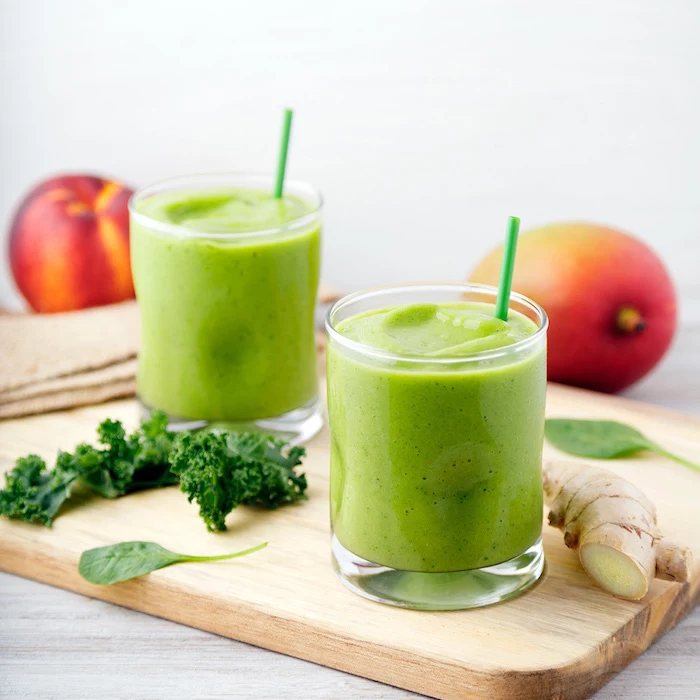
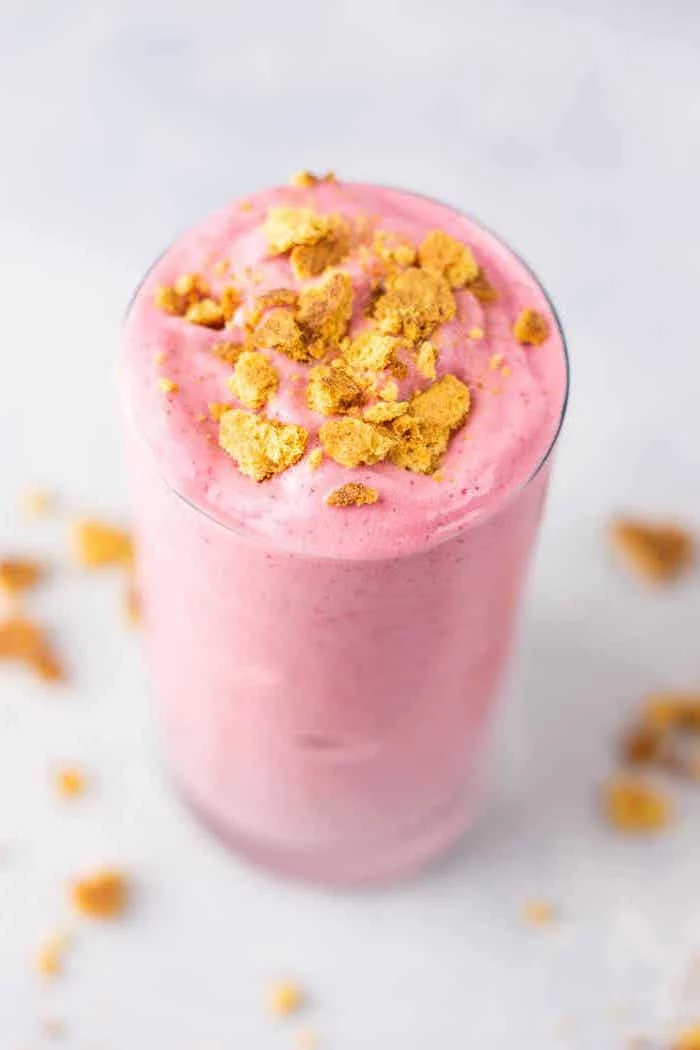
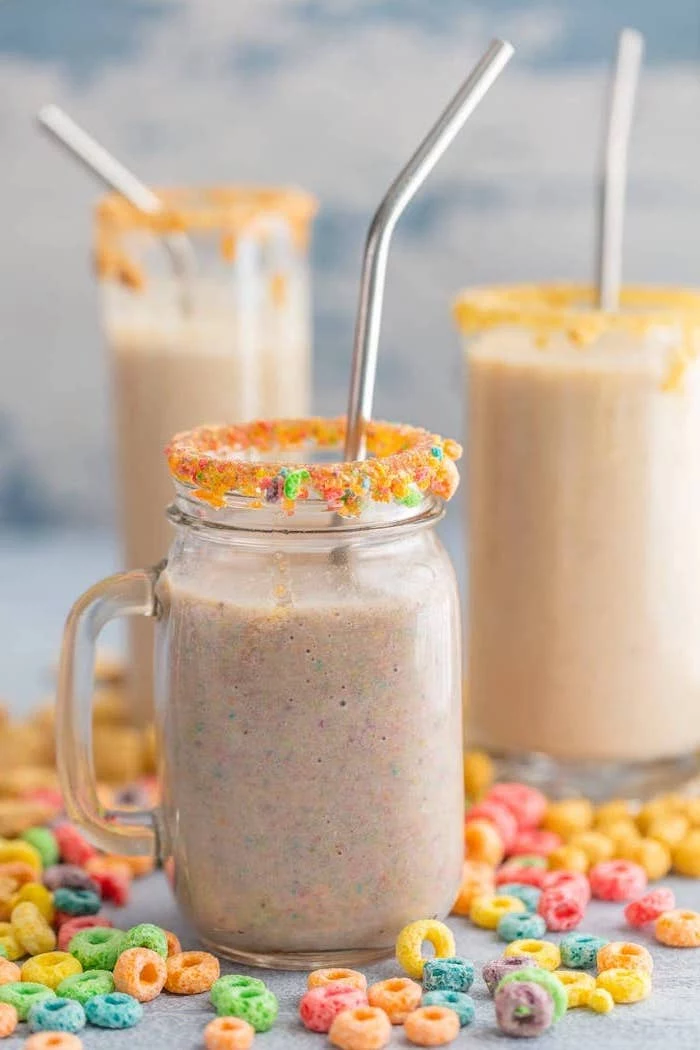
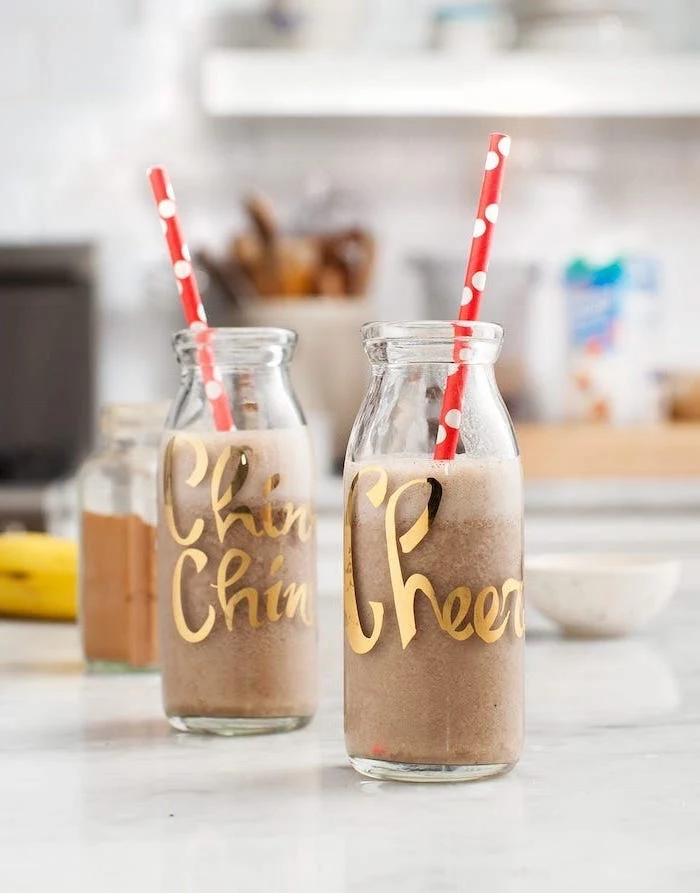
Don’t be afraid to go savory. A smoothie doesn’t have to be sweet. Try blending avocado, cucumber, a handful of cilantro, a squeeze of lime juice, and a splash of unsweetened almond milk. It’s a refreshing, hydrating, and surprisingly delicious alternative, like a gazpacho on the go.
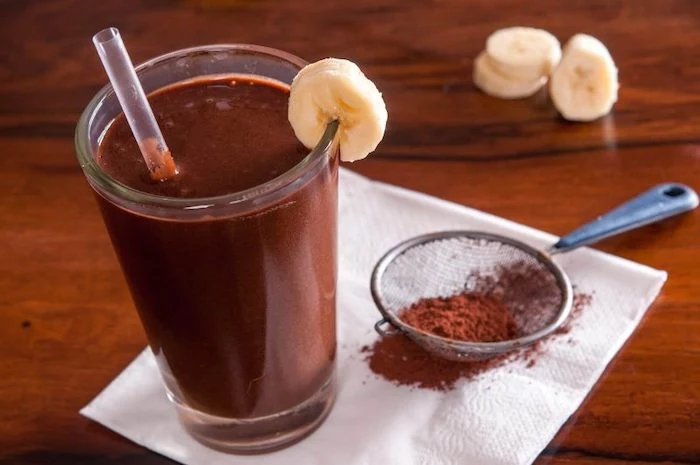
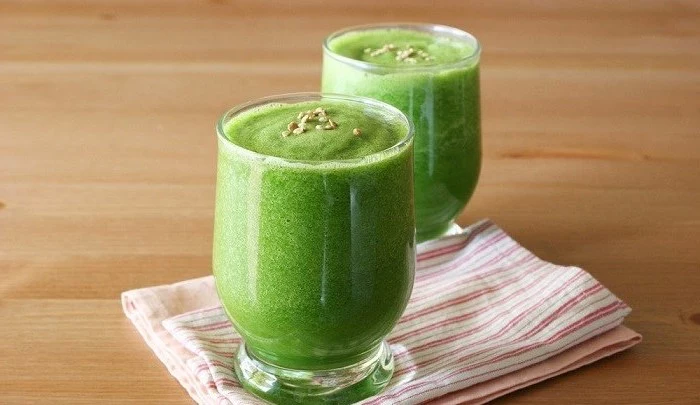
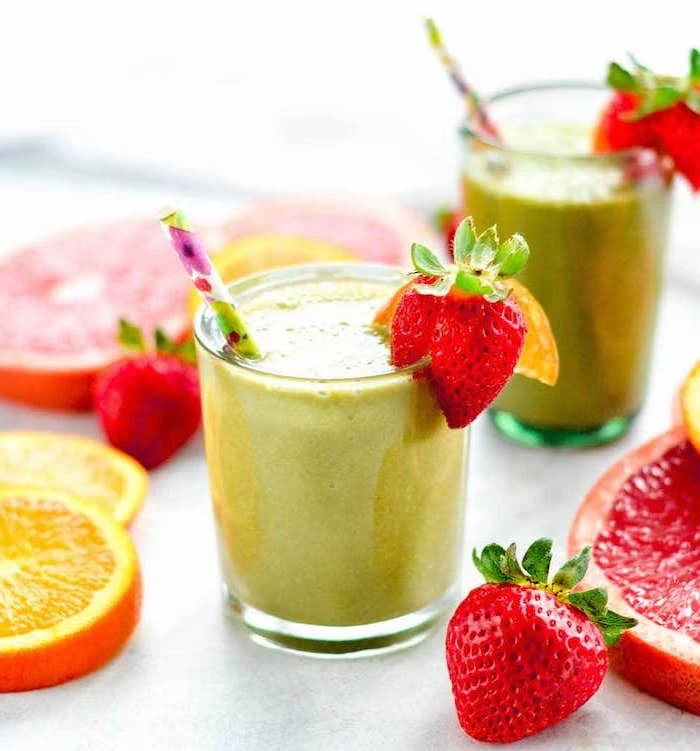
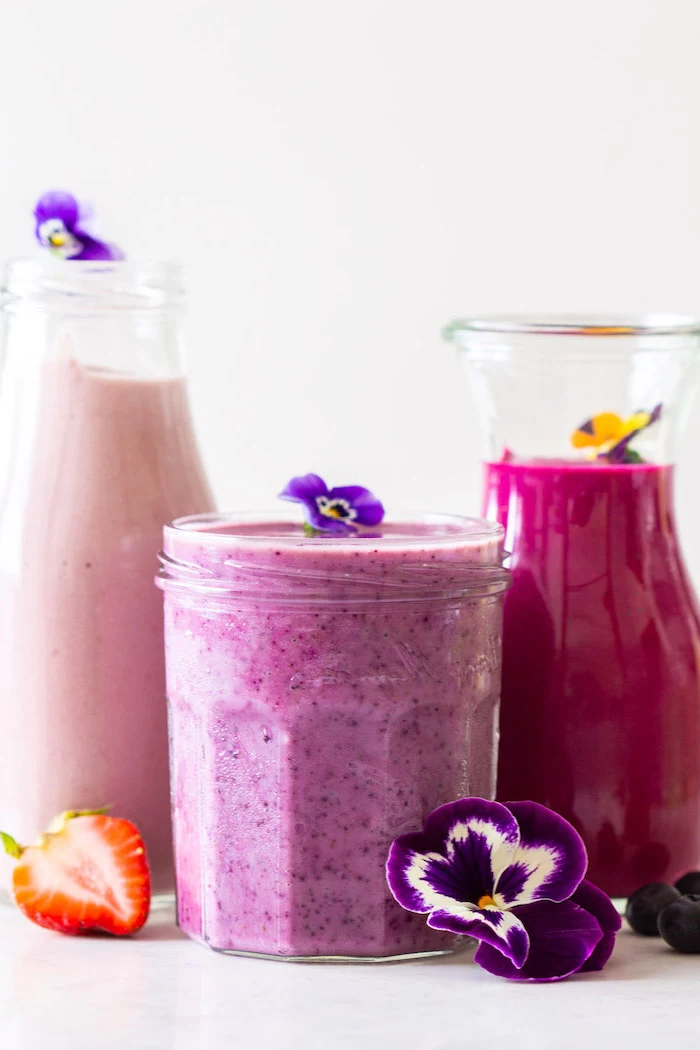

- Unlocks more nutrients from seeds like flax.
- Creates a creamier, less gritty texture.
- Makes nuts easier to blend and digest.
The secret? Soaking your nuts, seeds, or even oats in a bit of water for at least 20 minutes (or overnight) before blending. It’s a game-changer for texture.
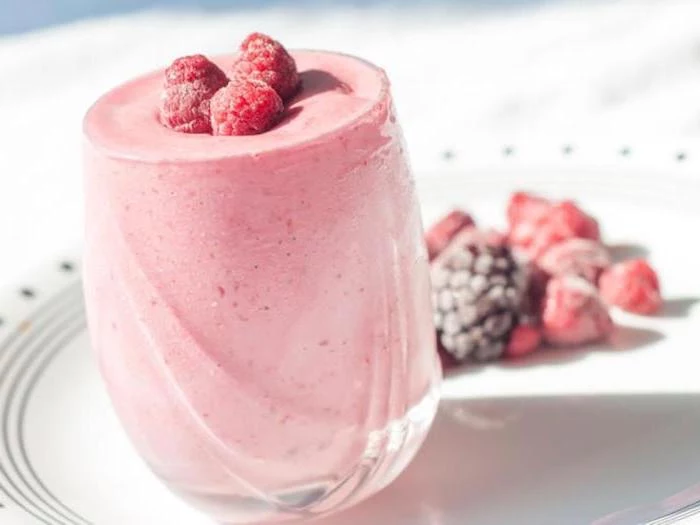
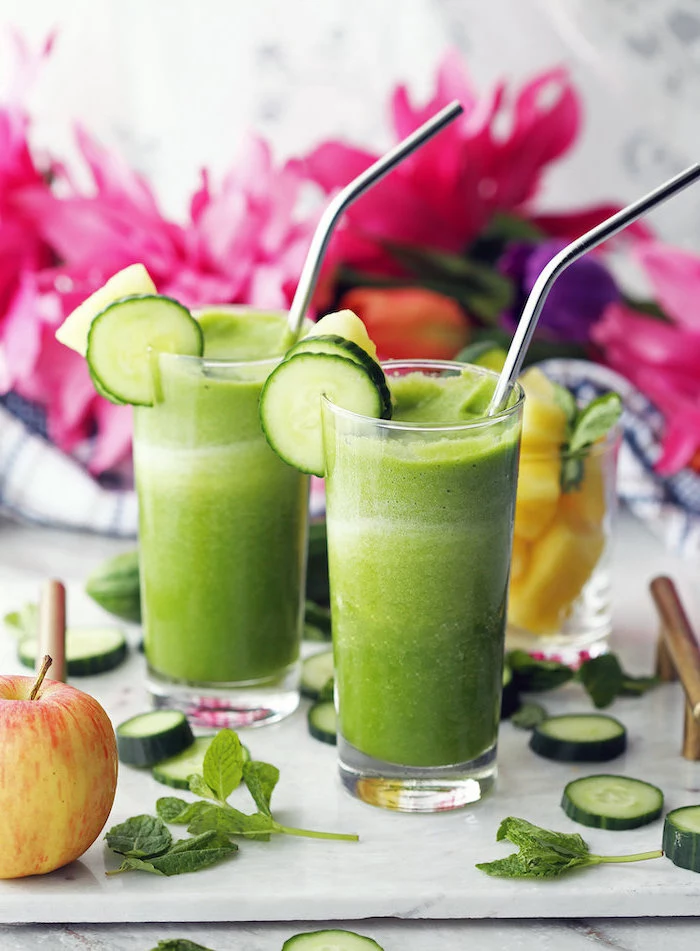
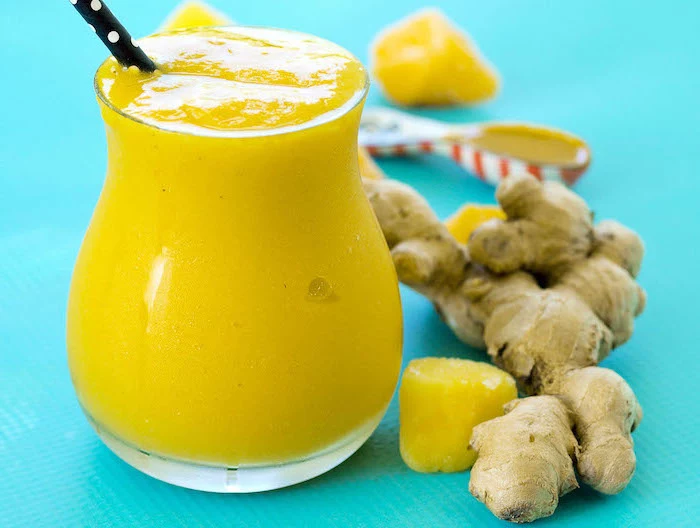
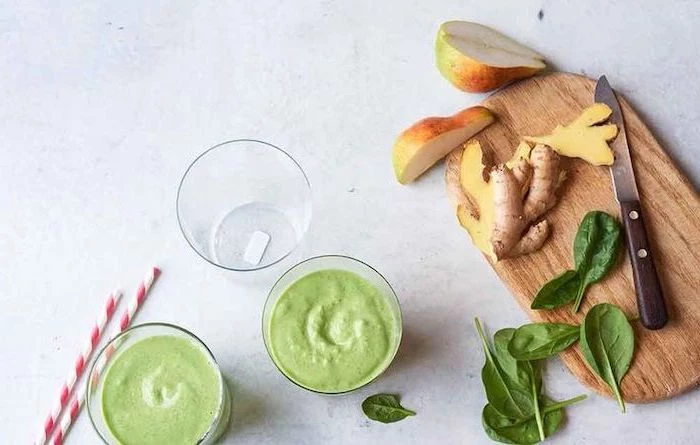
Your liquid base sets the stage. While water is an option, it adds zero flavor or creaminess. Unsweetened almond milk is a great low-calorie all-rounder. For ultimate creaminess, try oat milk (like Oatly) or canned light coconut milk for a rich, tropical vibe. For a tangy, probiotic-rich base, kefir is an excellent choice.
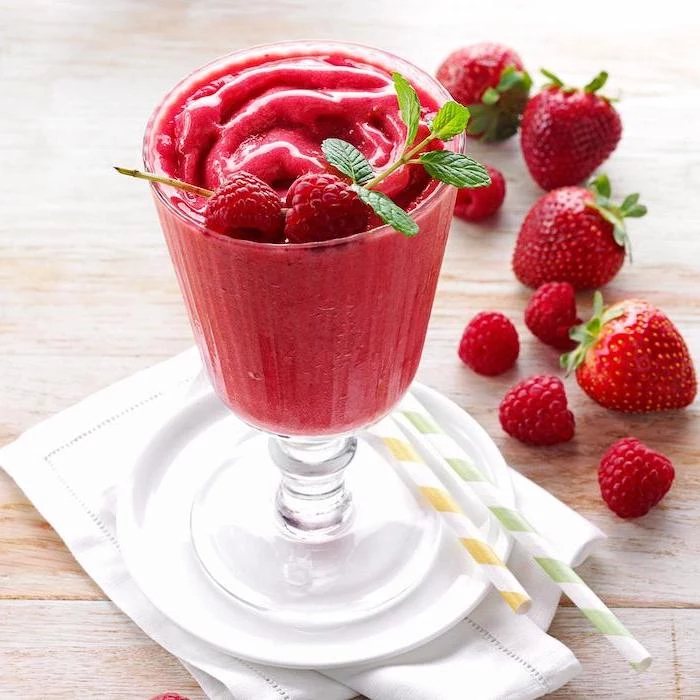
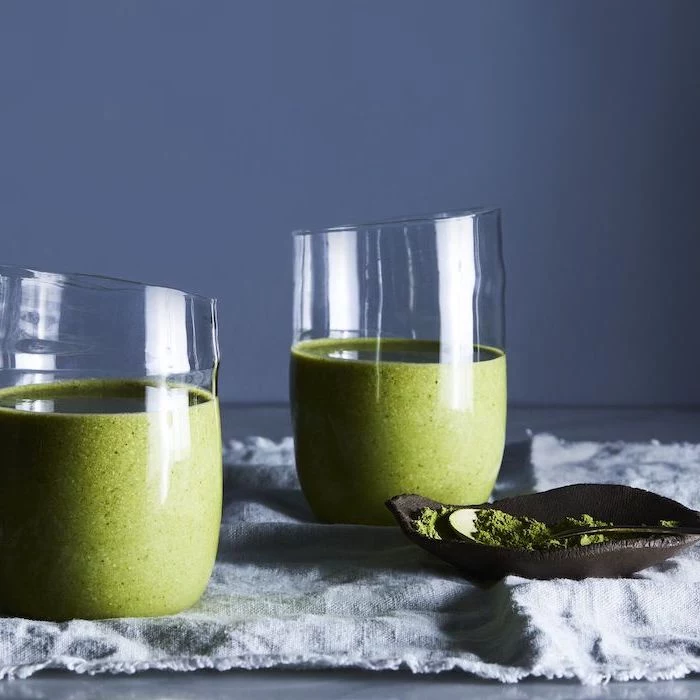
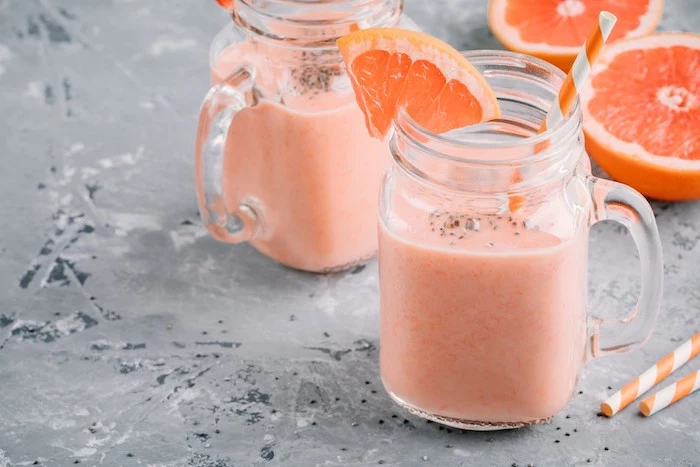
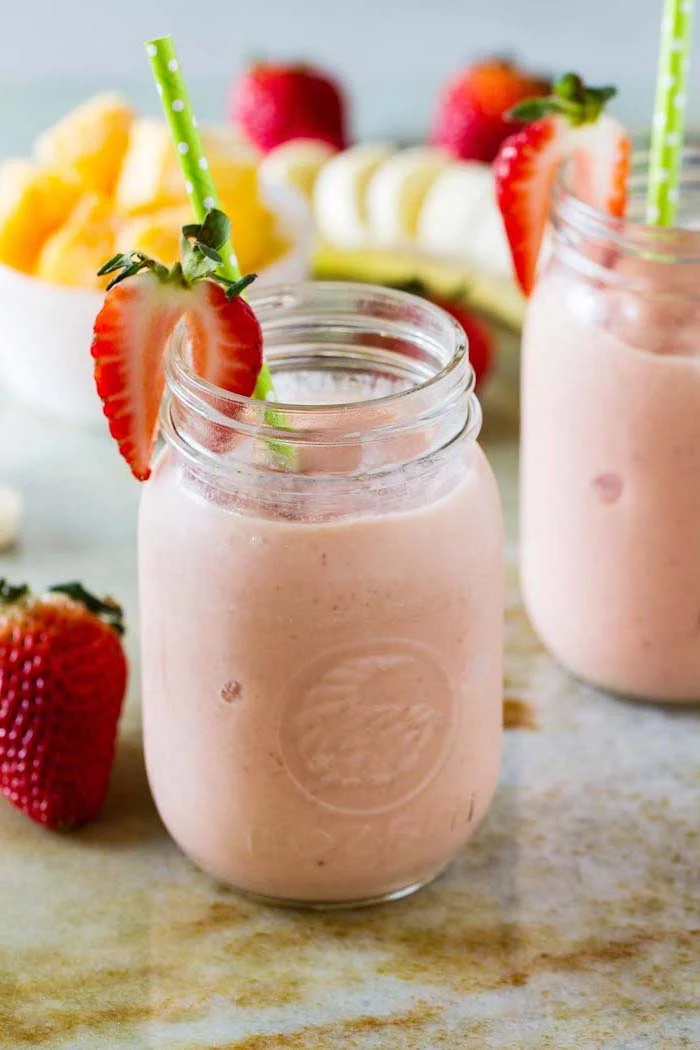
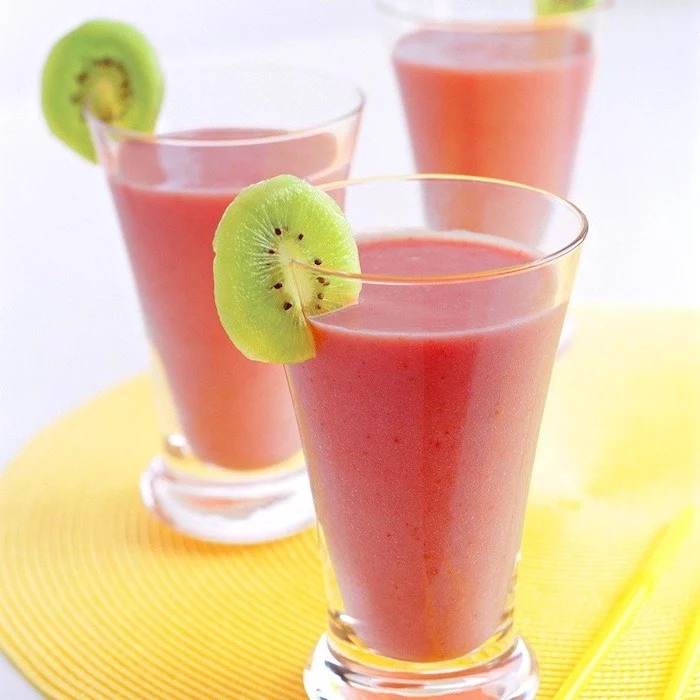
Never throw away your overripe bananas!
Peel them, break them into chunks, and freeze them on a baking sheet before transferring to a bag. Frozen bananas are the undisputed king of smoothie ingredients, adding natural sweetness and an ice-cream-like creaminess no other fruit can match.
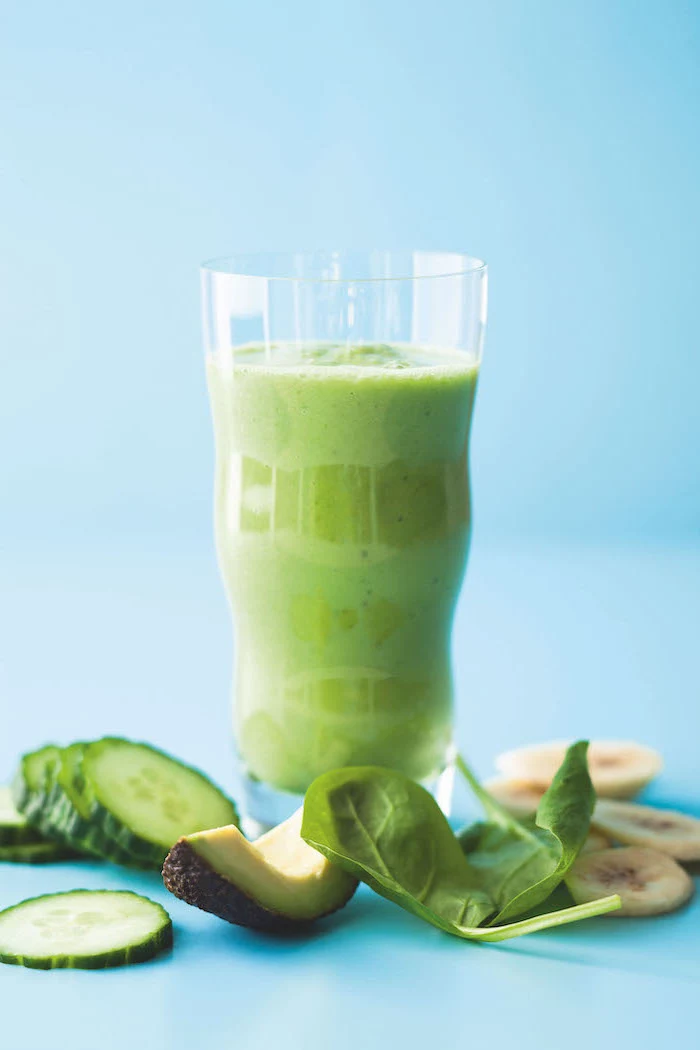
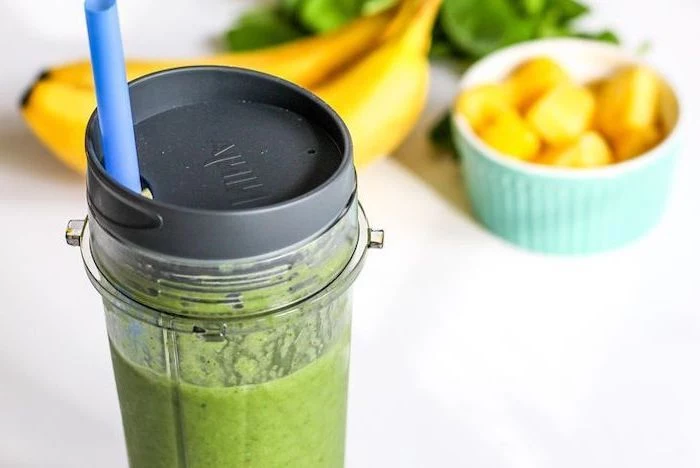
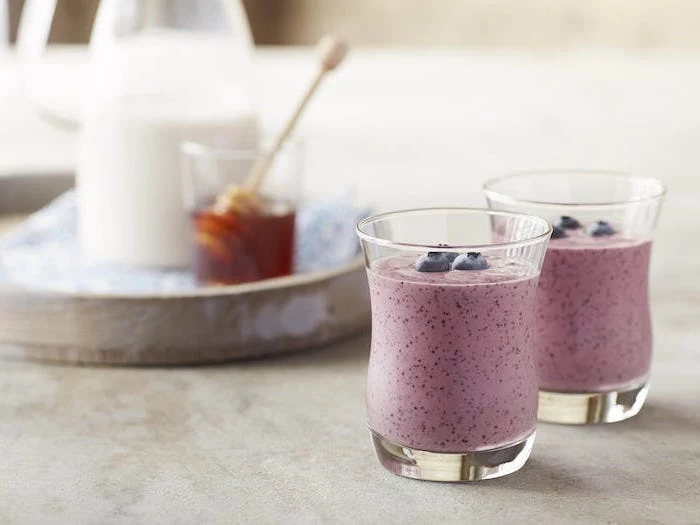
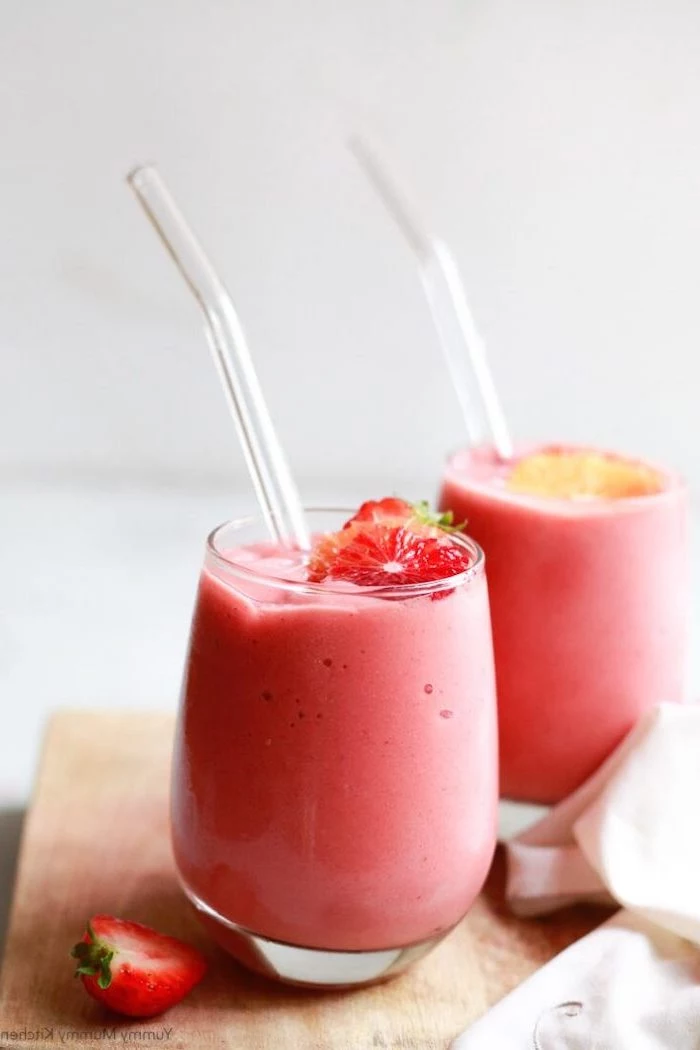
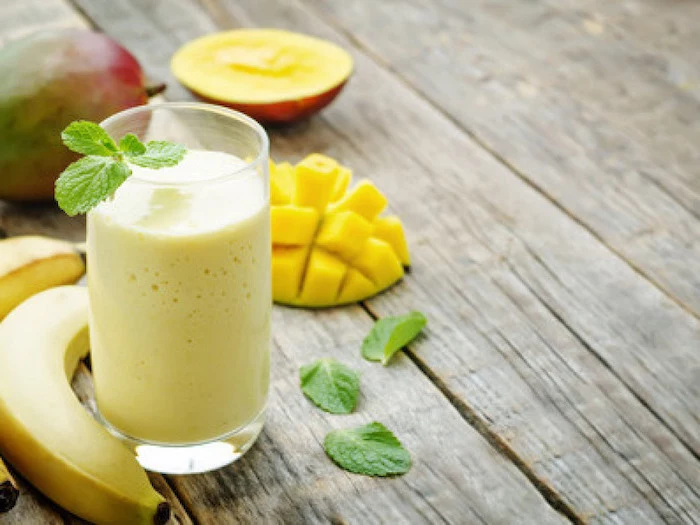
A word on greens: If you’re new to green smoothies, start with baby spinach. It’s virtually tasteless when blended with fruit. As your palate adjusts, you can graduate to greens with a more assertive flavor, like kale (be sure to remove the tough stems) or even peppery arugula.
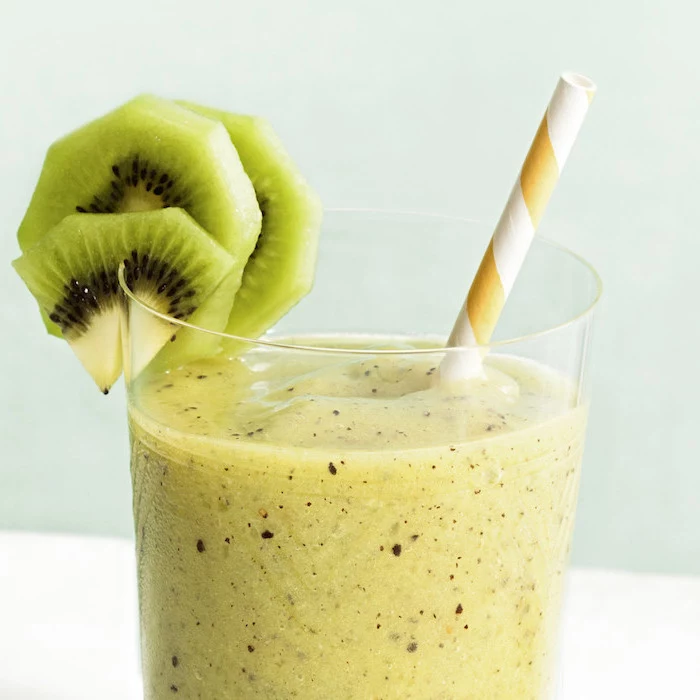
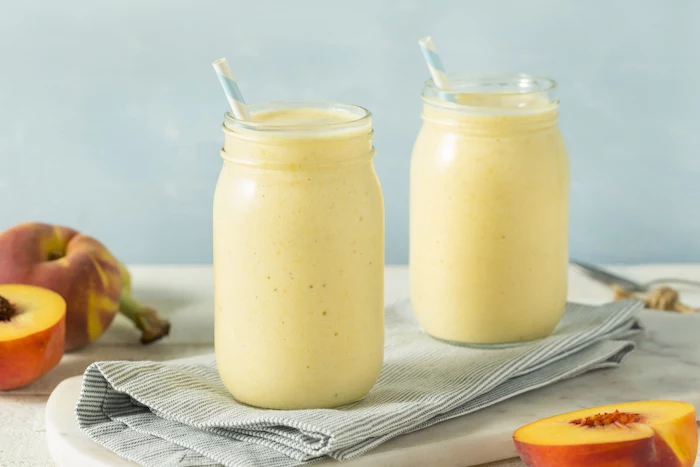
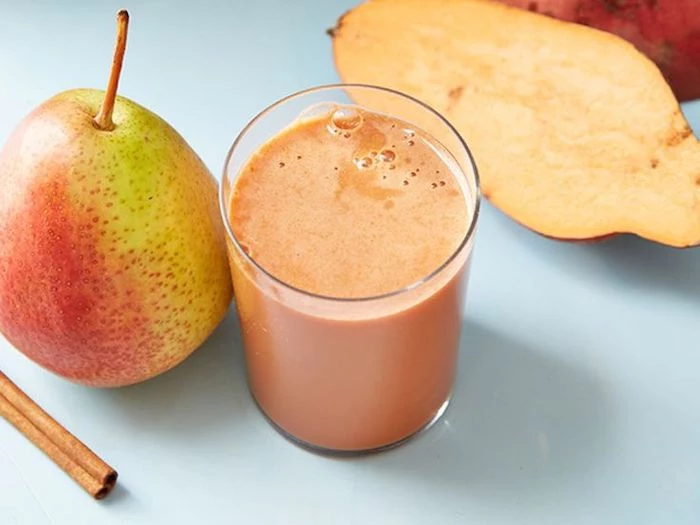
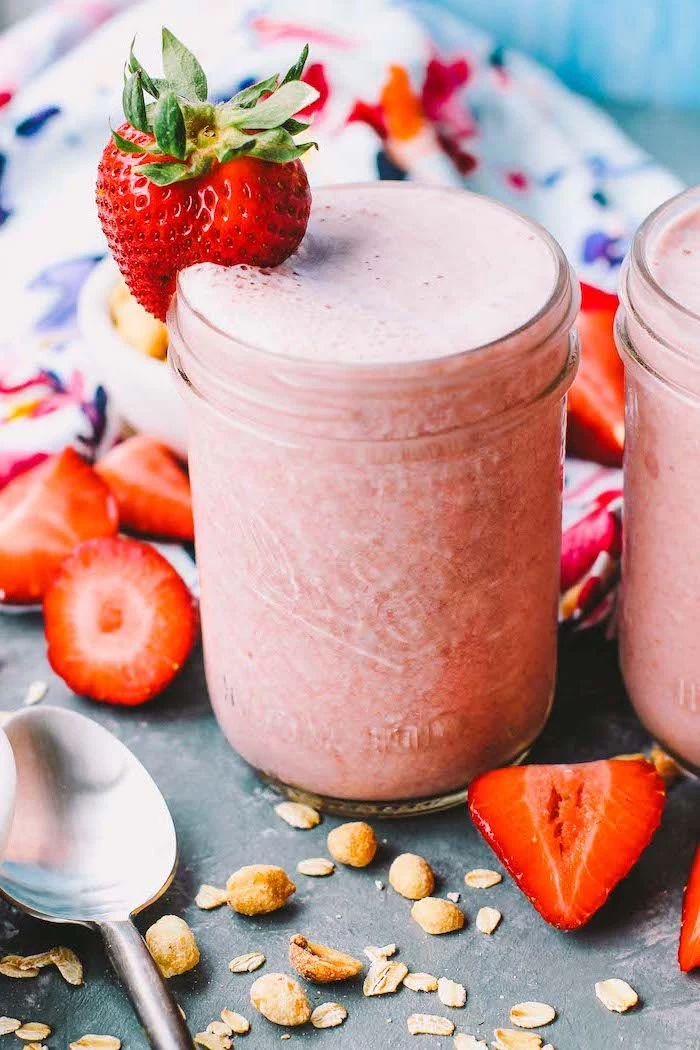
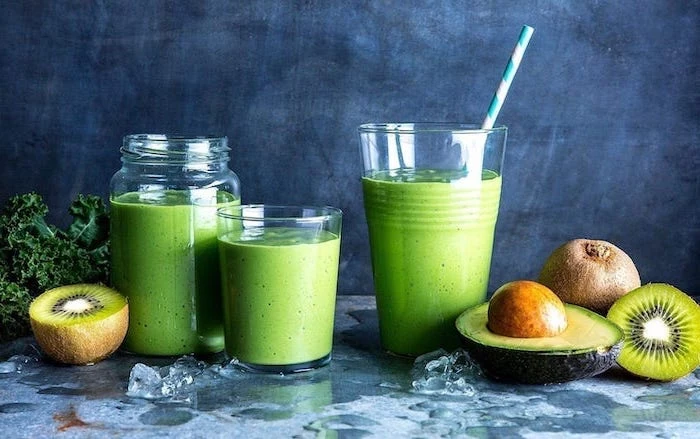
Tired of cleaning your blender?
The 30-second cleanup is your new best friend. As soon as you’ve poured your smoothie, immediately rinse the pitcher. Then, fill it a third of the way with warm water, add a drop of dish soap, put it back on the base, and blend on high for 20-30 seconds. Rinse, and you’re done.
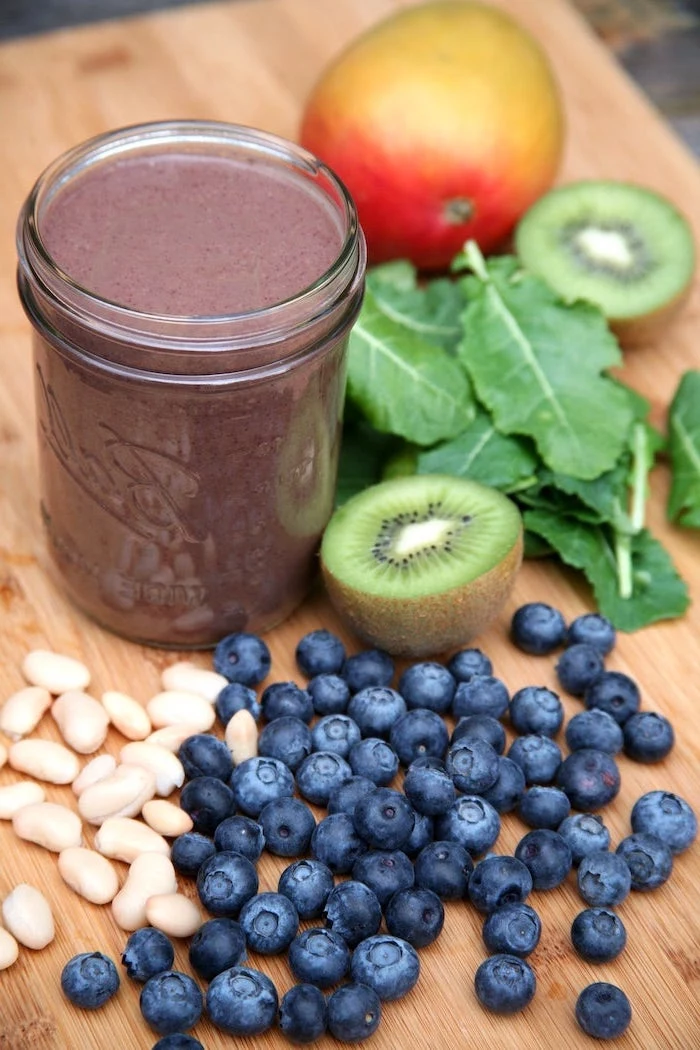
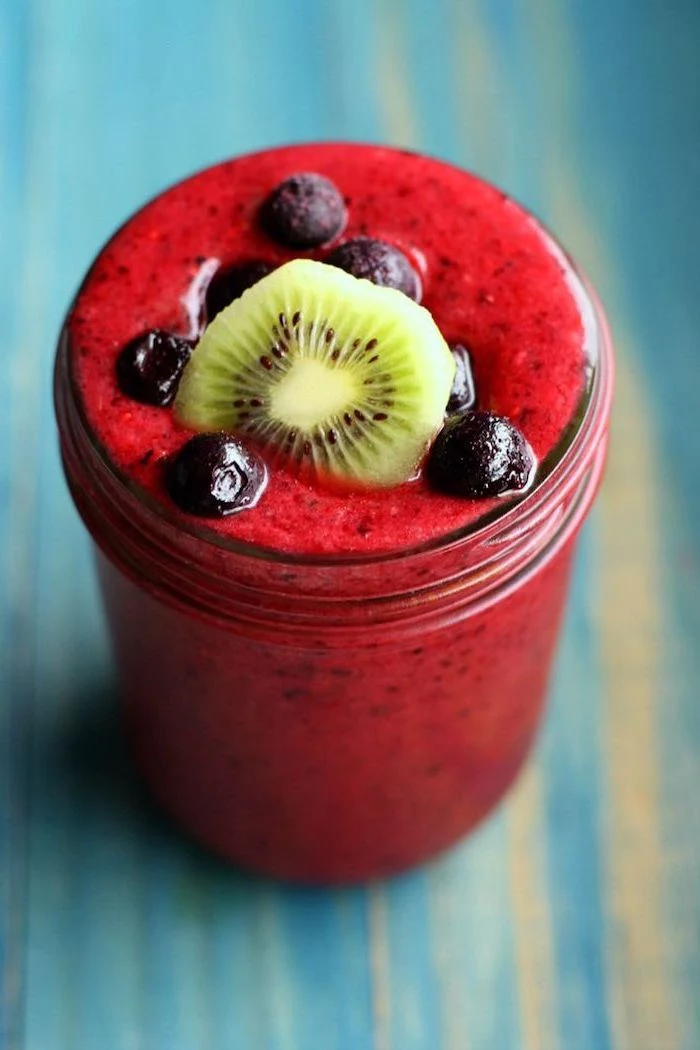
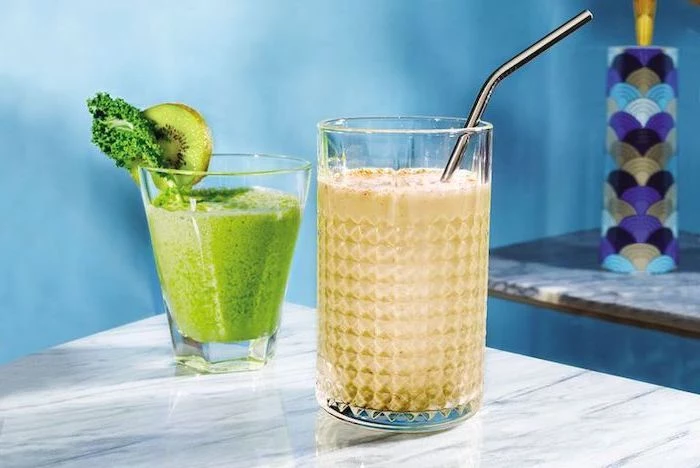

Explore adaptogens for a functional boost. These herbs help your body manage stress and find balance.
- Maca Powder: Has an earthy, caramel-like taste and is known for boosting energy and mood.
- Ashwagandha: Helps with calm and stress relief. It can be slightly bitter, so pair it with strong flavors like cacao or banana.
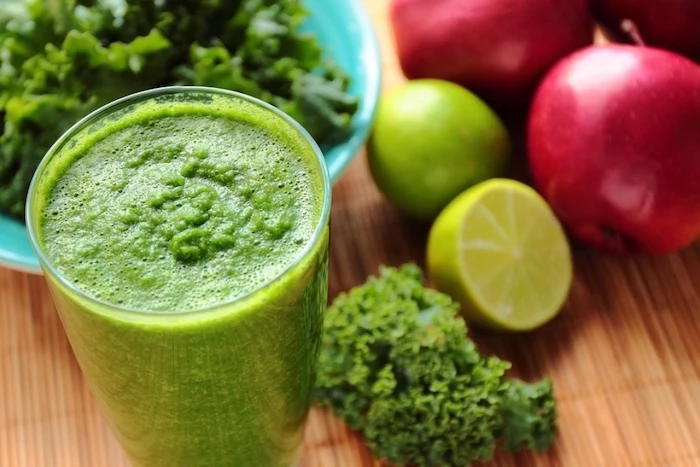
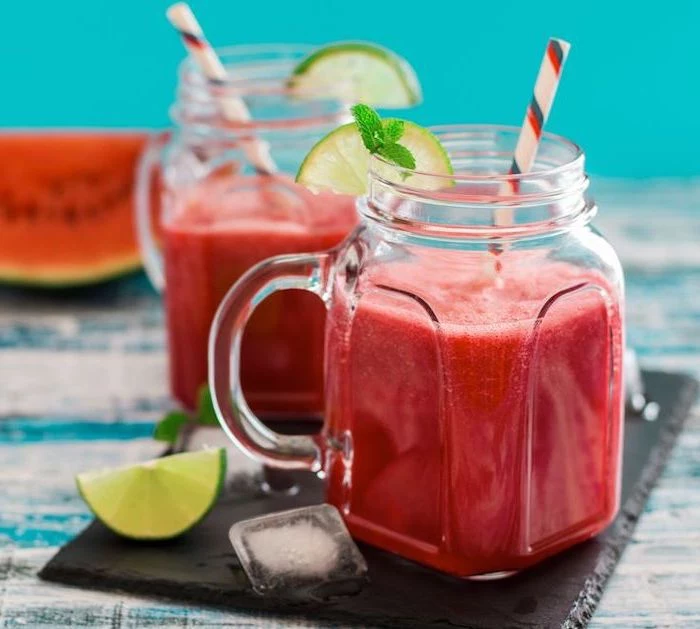
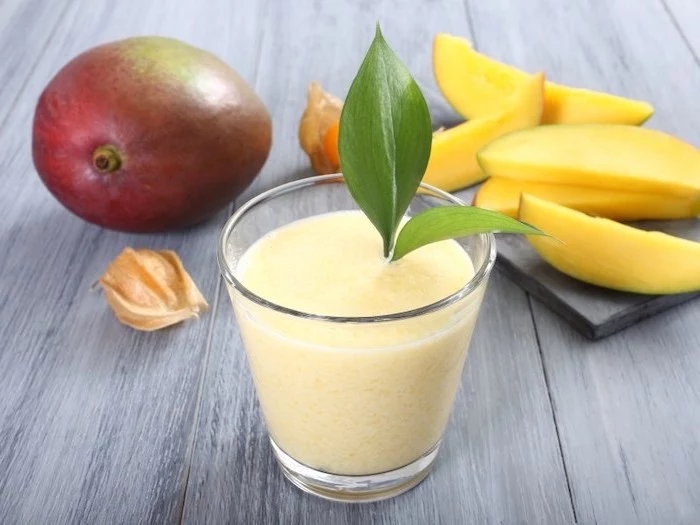
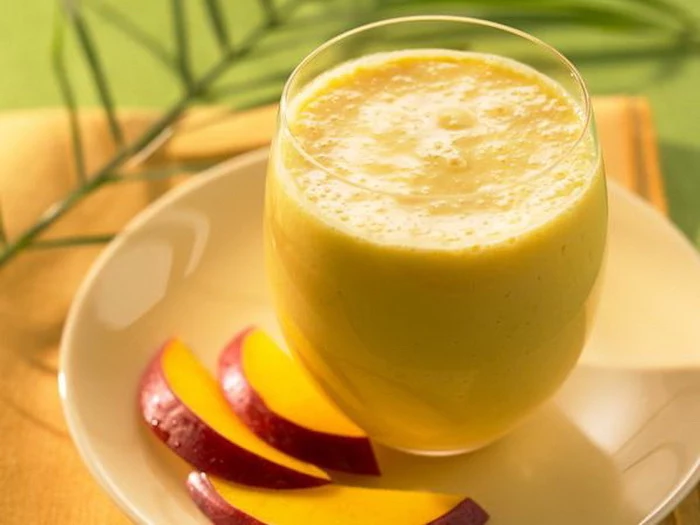
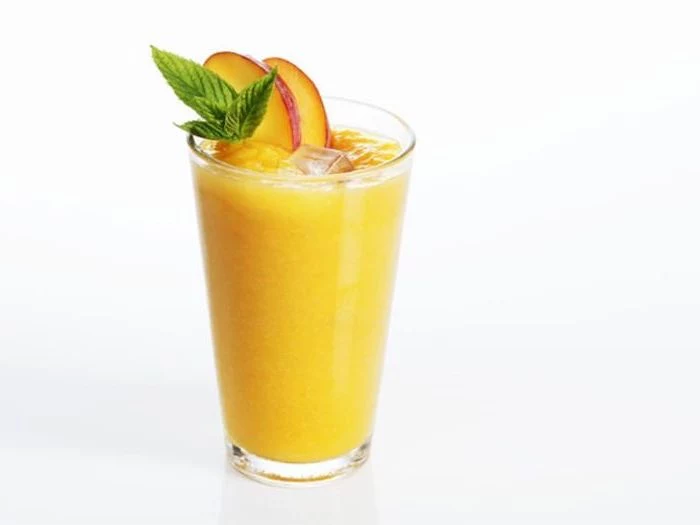
Important point: Not all protein powders are created equal for smoothies. Casein protein, for instance, absorbs a lot of liquid and can result in a thick, sludgy texture if you’re not careful. Whey isolate tends to be thinner. When trying a new protein, start with half a scoop to gauge its thickening effect before committing to a full one.
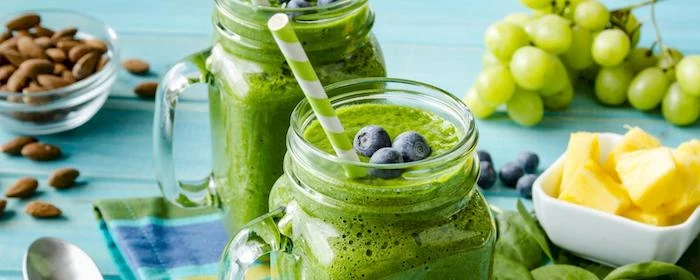
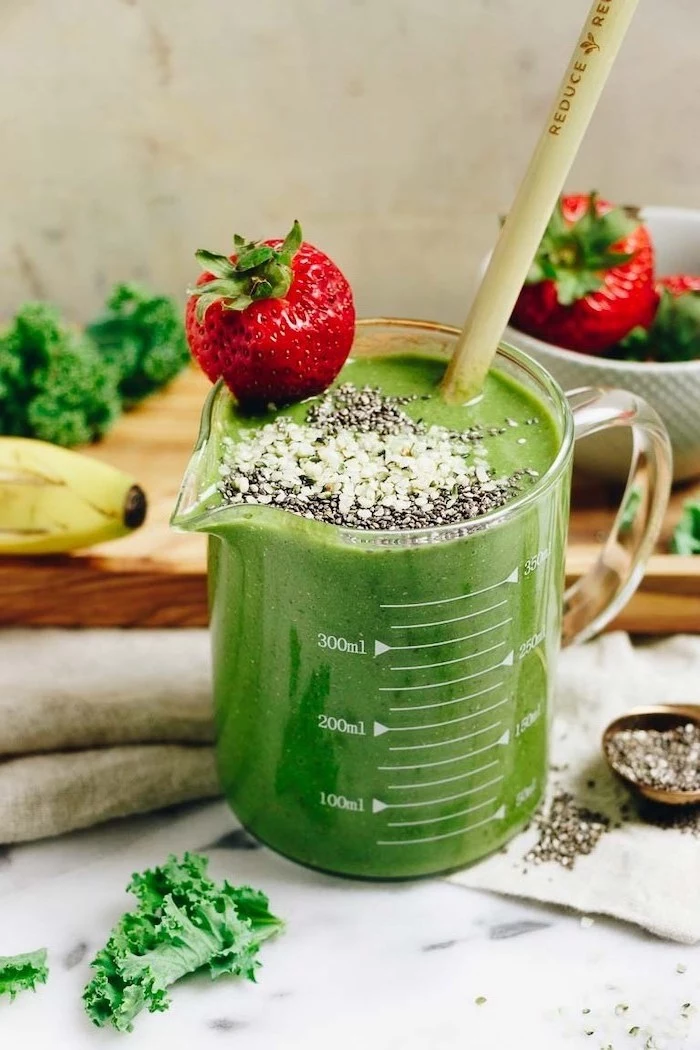
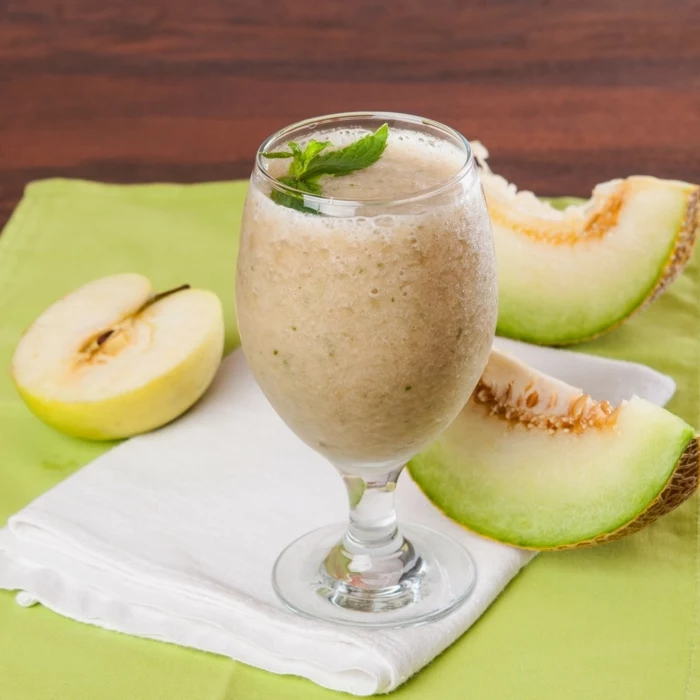
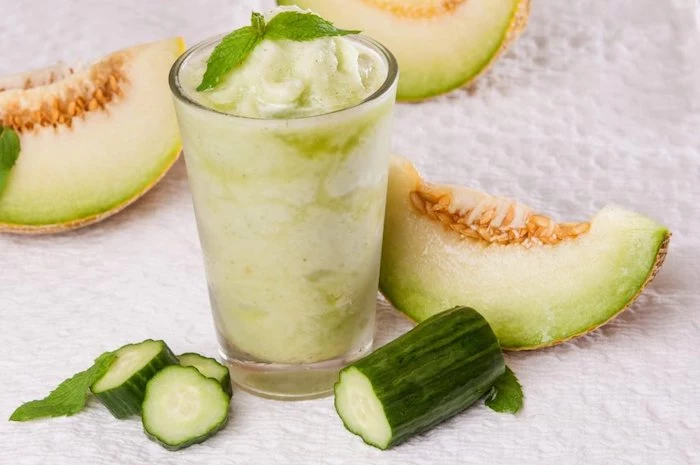
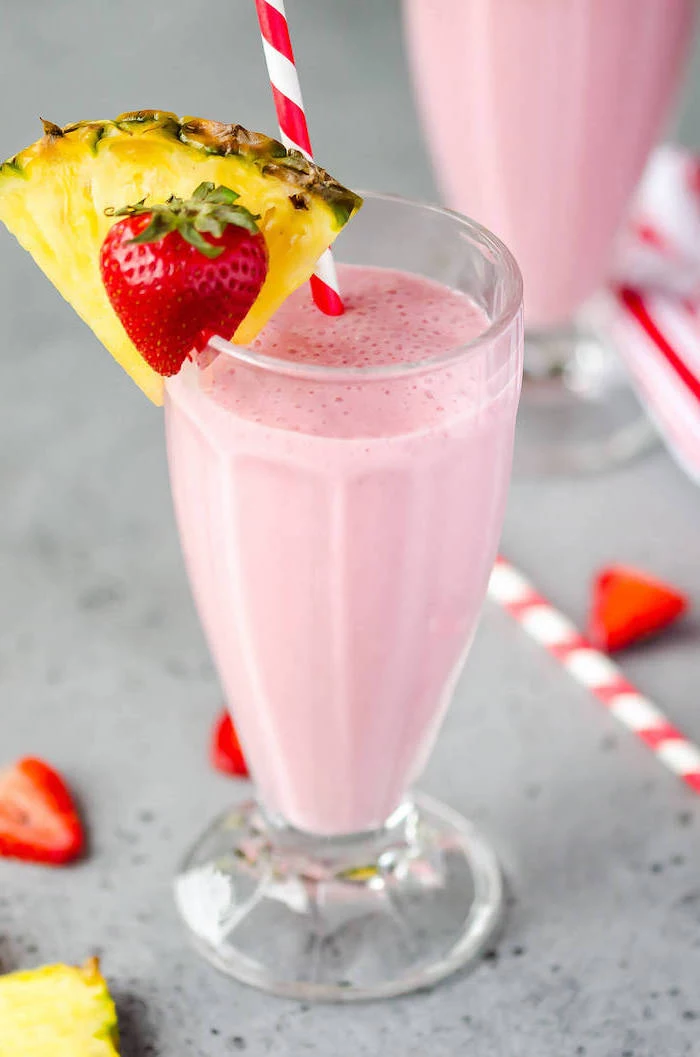
Go beyond fruit for sweetness. A single Medjool date adds a deep, caramel-like sweetness and extra fiber. A teaspoon of pure maple syrup or raw honey can also work, but for a zero-calorie option that won’t spike blood sugar, a few drops of liquid stevia or a sprinkle of monk fruit sweetener is perfect.
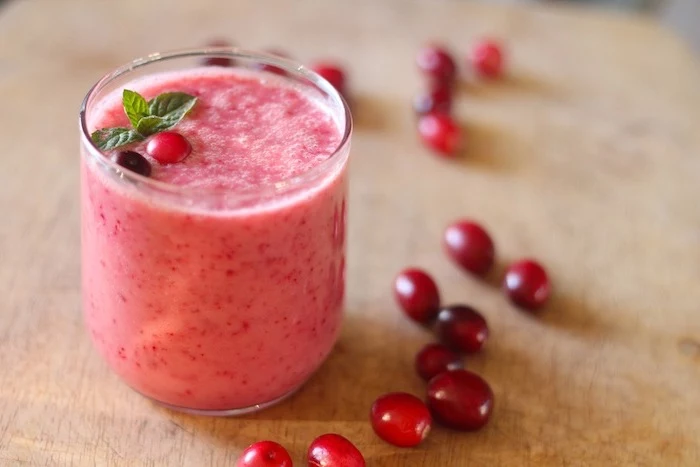
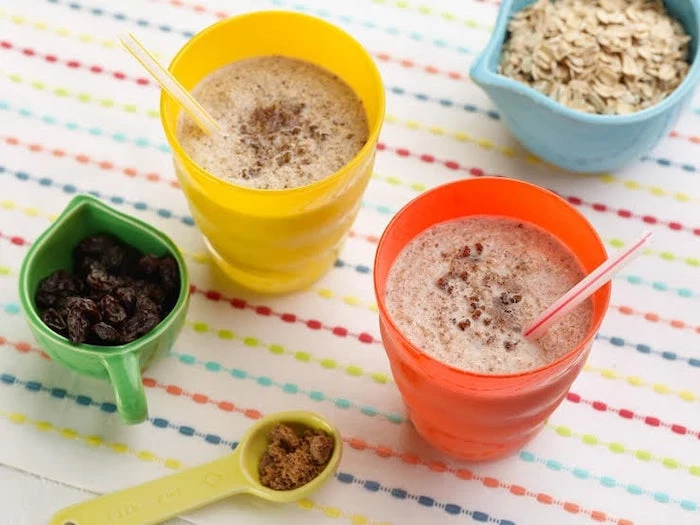
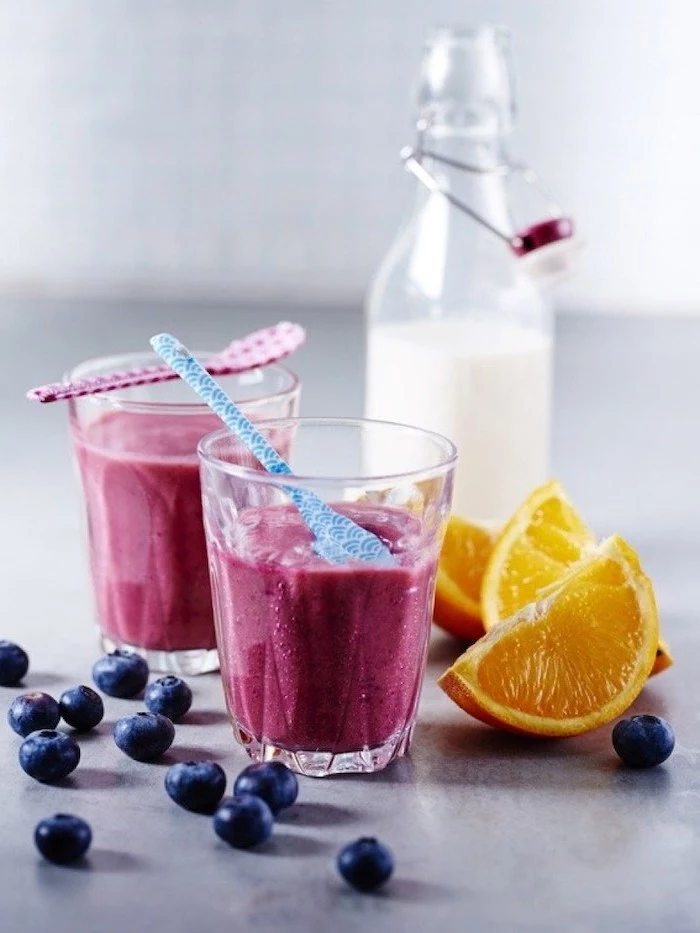
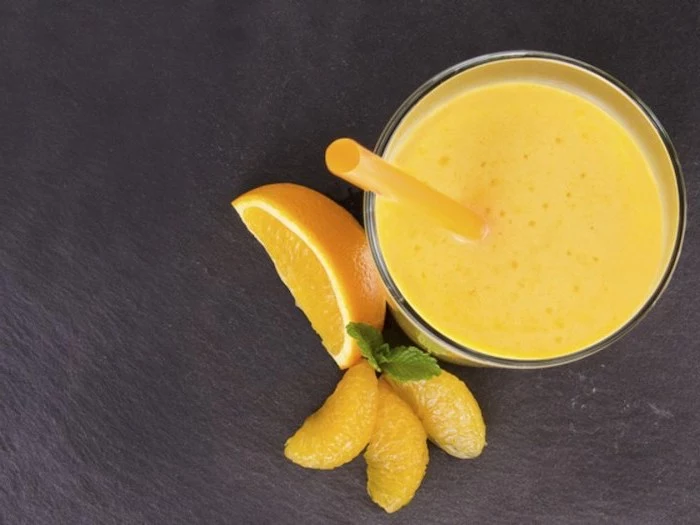
A 2021 study found that flavonoids in berries and citrus fruits help preserve the flavanols in other ingredients (like bananas or cocoa) during blending.
What does this mean for your smoothie? Adding a squeeze of lemon or a handful of strawberries doesn’t just brighten the flavor; it helps protect the nutritional integrity of your entire blend. It’s a small step with a real scientific benefit.
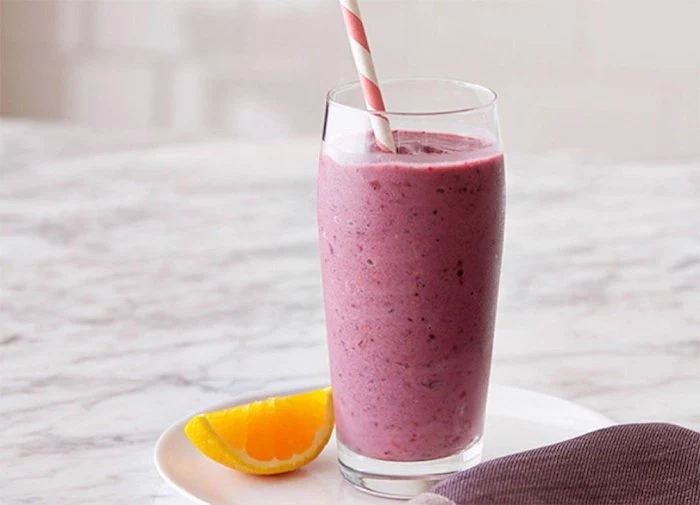
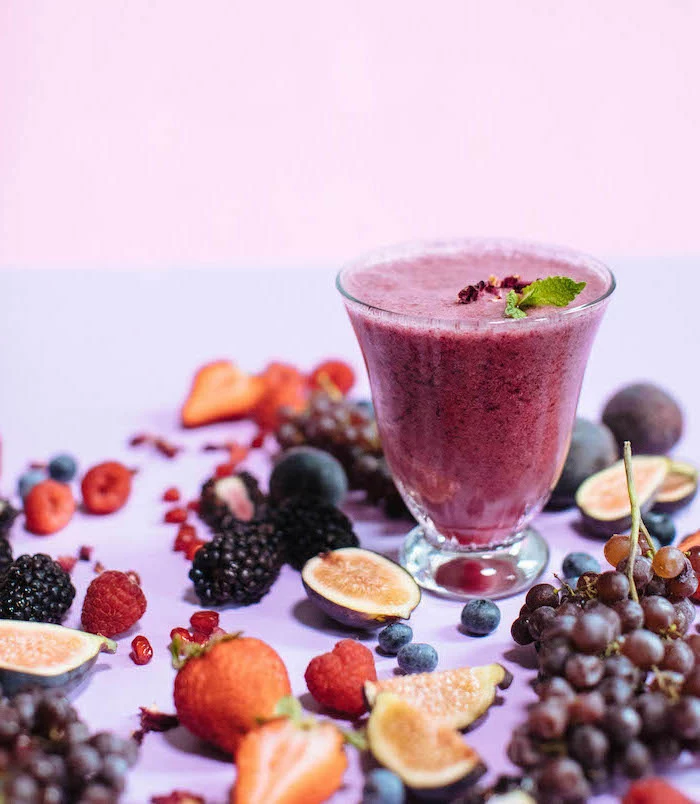

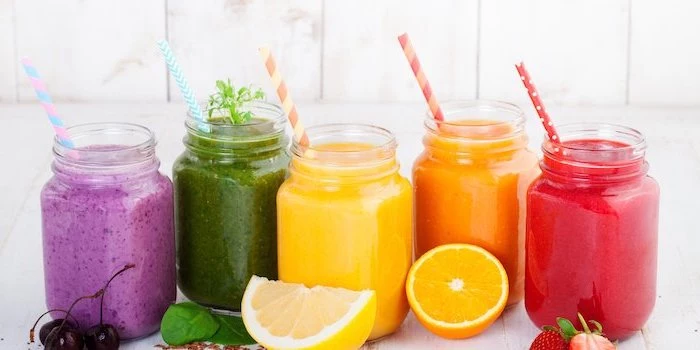
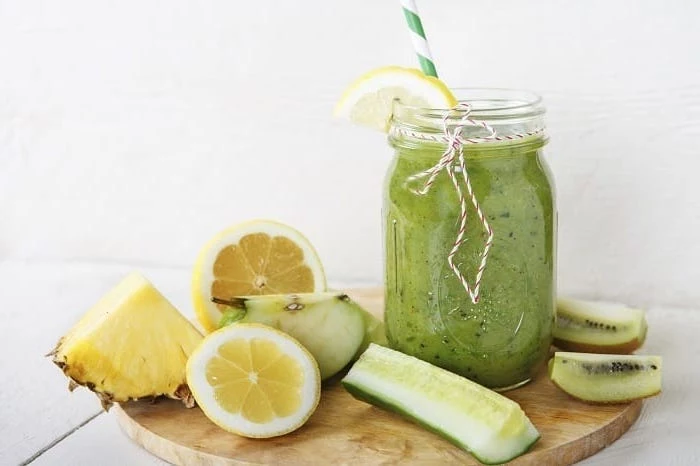
For an instant dessert-like smoothie, always have cacao powder on hand. Not to be confused with sweetened cocoa mix, raw cacao is packed with antioxidants. A tablespoon paired with a frozen banana, a spoonful of almond butter, and your milk of choice creates a healthy, deeply satisfying chocolate shake.
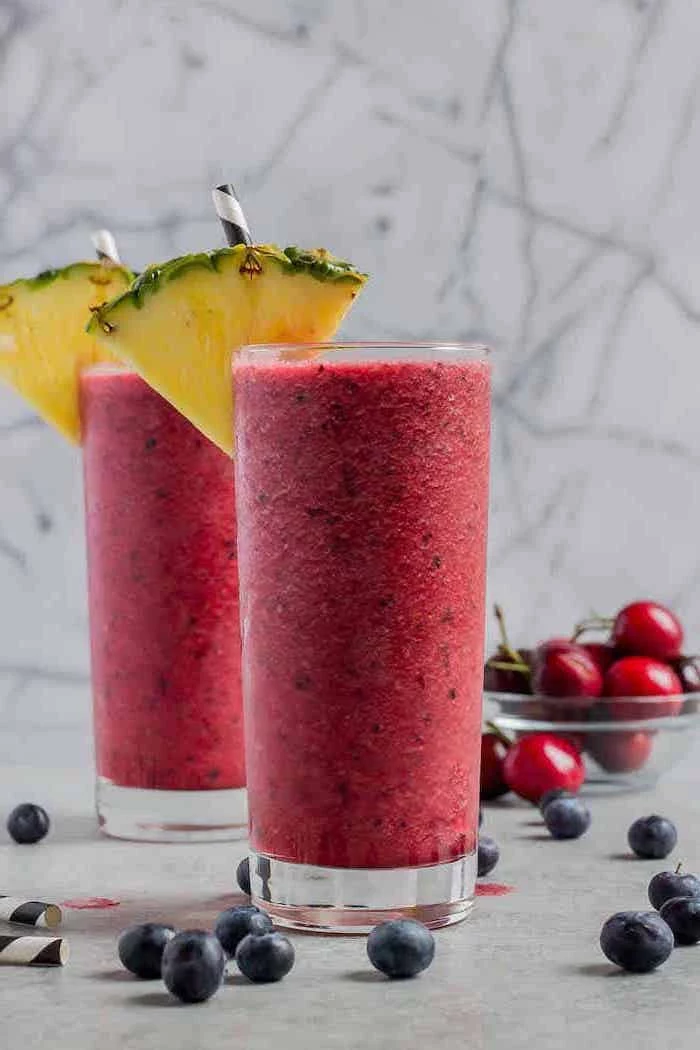
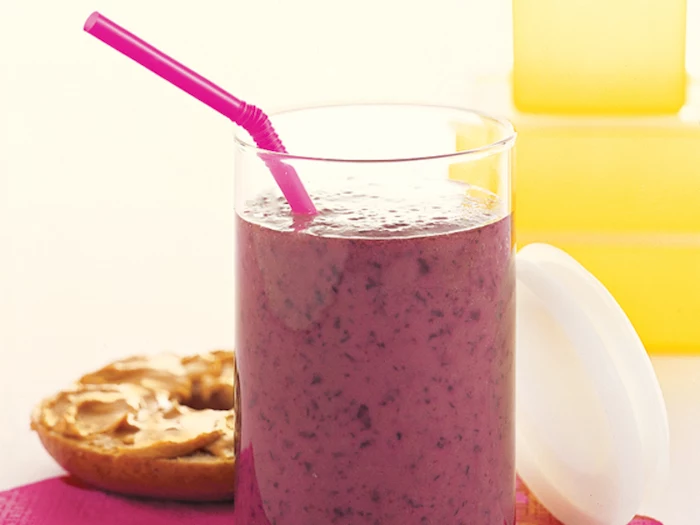
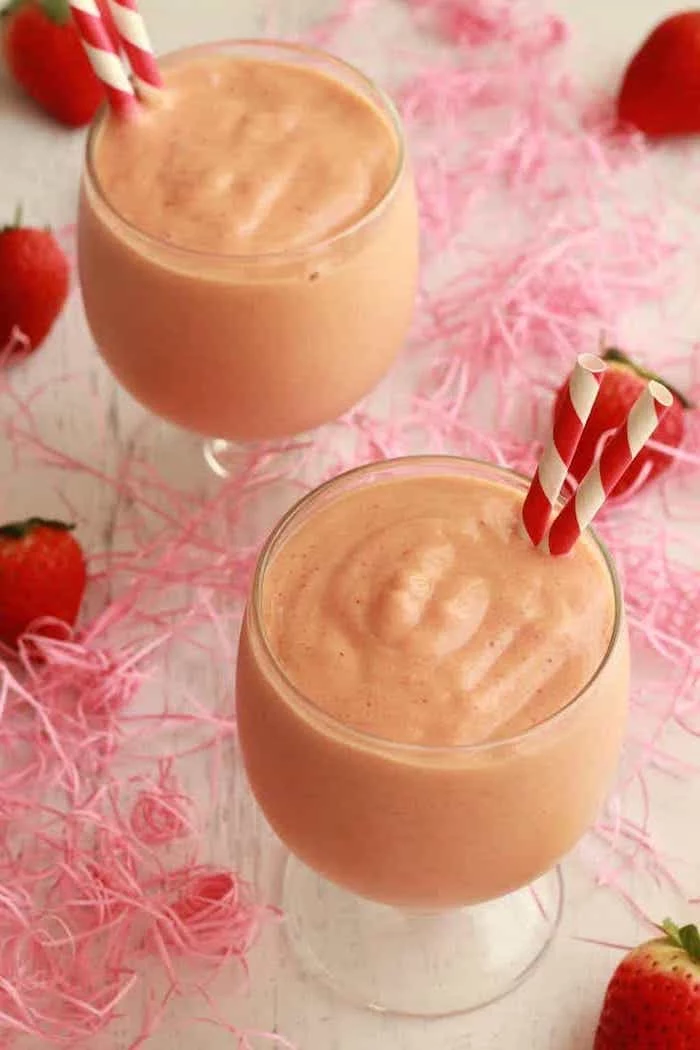
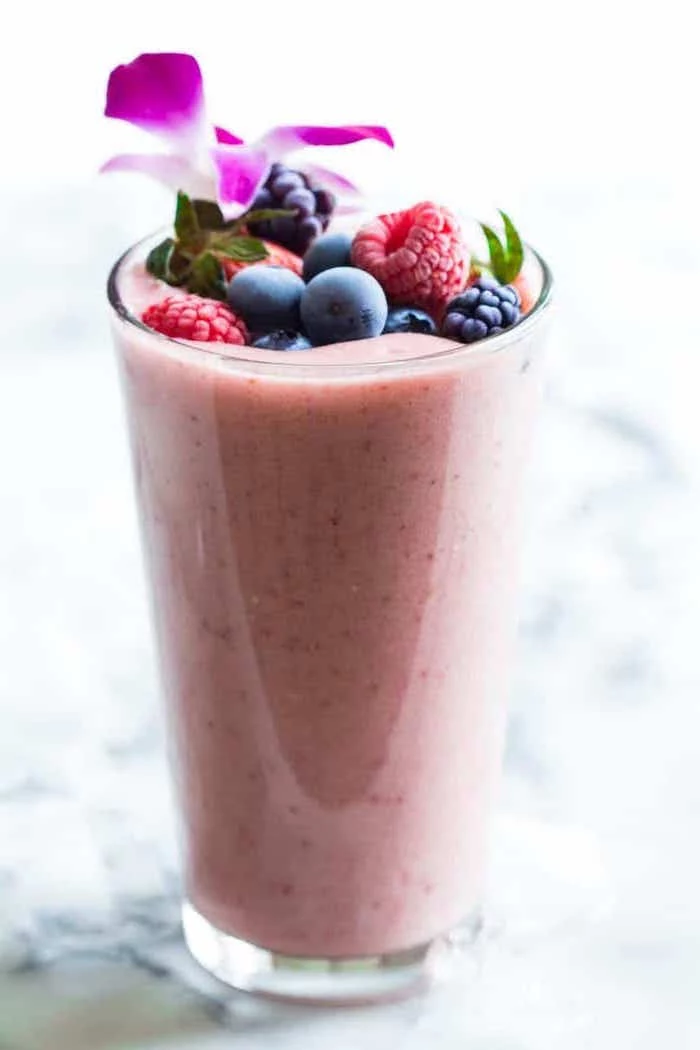
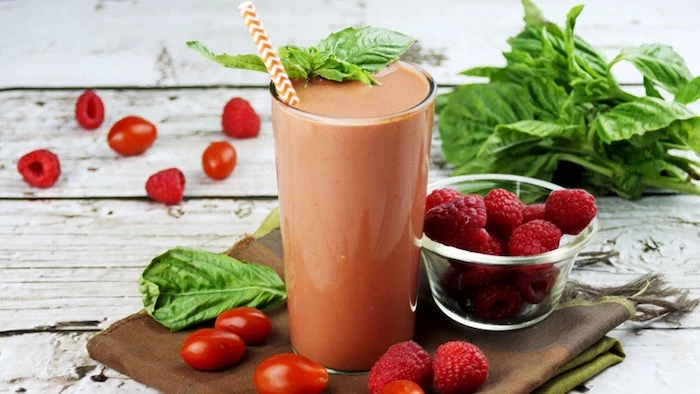
How do I make a smoothie bowl that’s actually thick enough to eat with a spoon?
The key is to drastically reduce your liquid. Start with just a quarter cup and use primarily frozen ingredients, like açaí packs (Sambazon is a classic brand), frozen bananas, or avocado. You’ll need to use your blender’s tamper to keep things moving. The goal is a soft-serve consistency, ready for toppings.
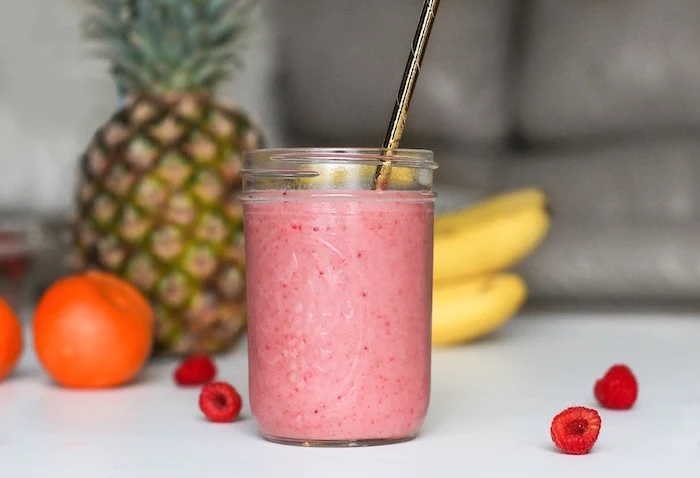
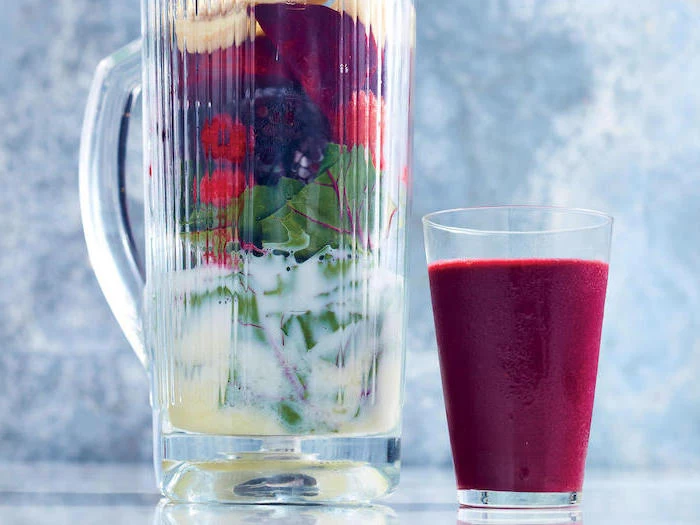
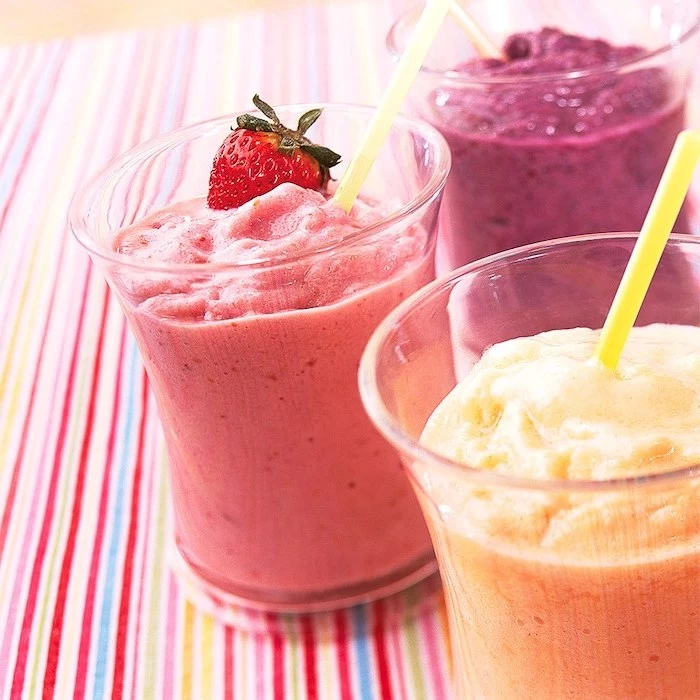
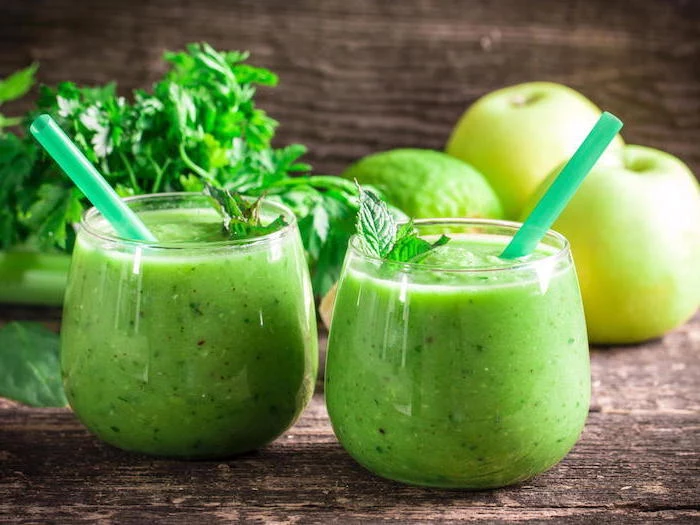
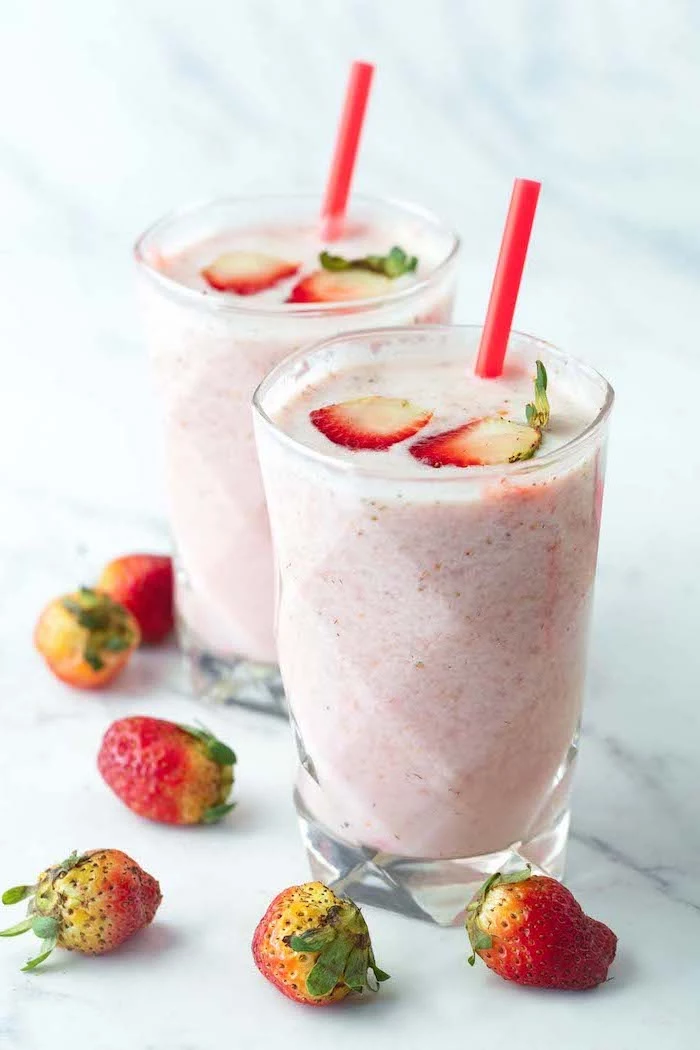
- Adds a spicy, warming kick.
- A powerful anti-inflammatory.
- Aids in digestion.
The secret? A small knob of fresh ginger. Peeled and tossed into the blender, it pairs beautifully with carrot, orange, pineapple, or mango smoothies for a sophisticated, health-boosting flavor dimension.
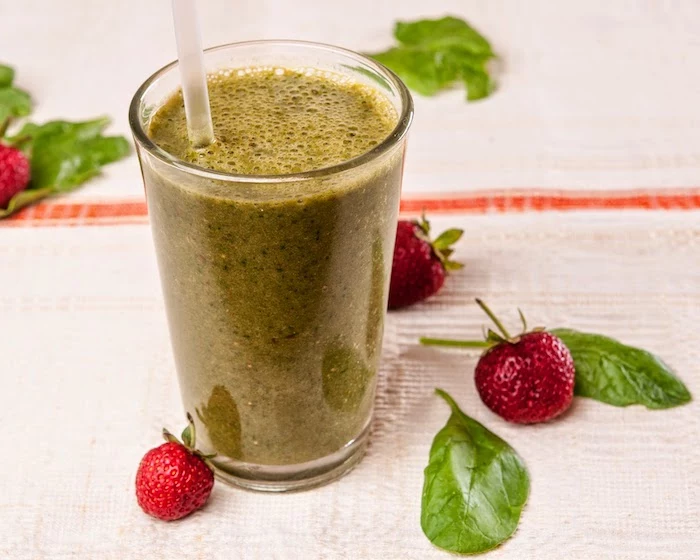
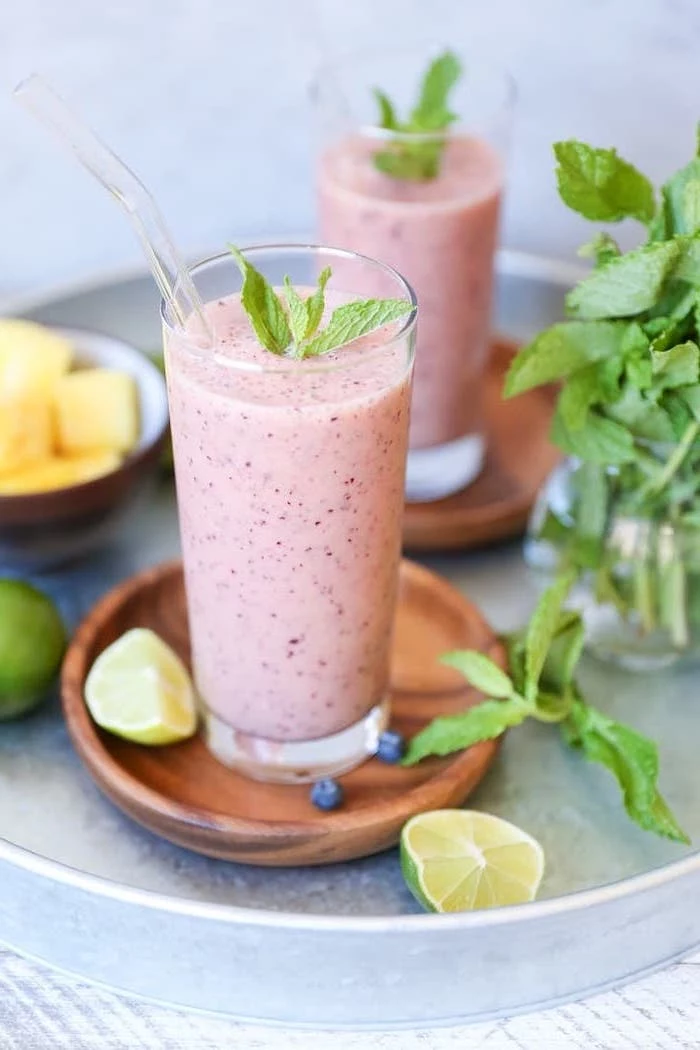
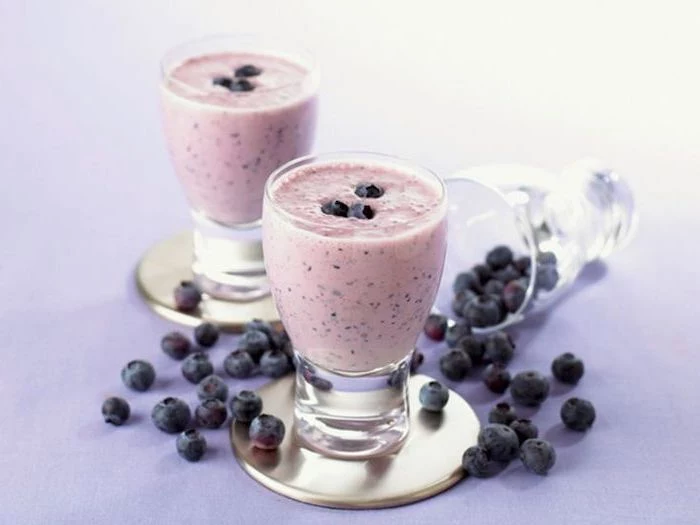

Think beyond the glass. Freezing your leftover smoothie mix in popsicle molds is a perfect way to create a healthy frozen treat for later. It’s a brilliant solution for when you’ve accidentally made too much, preventing waste and giving you a guilt-free dessert.
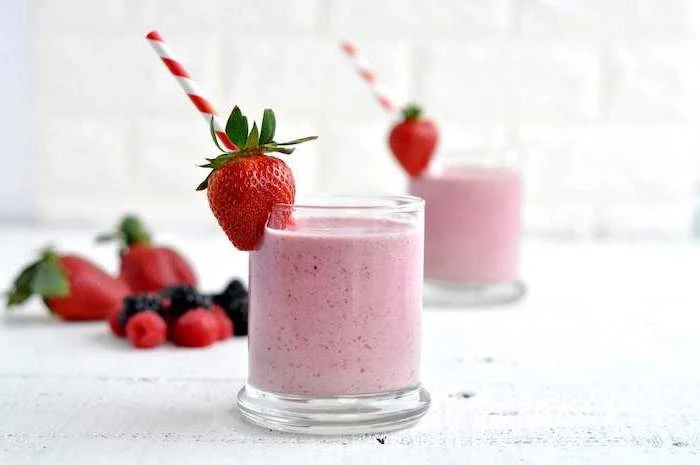
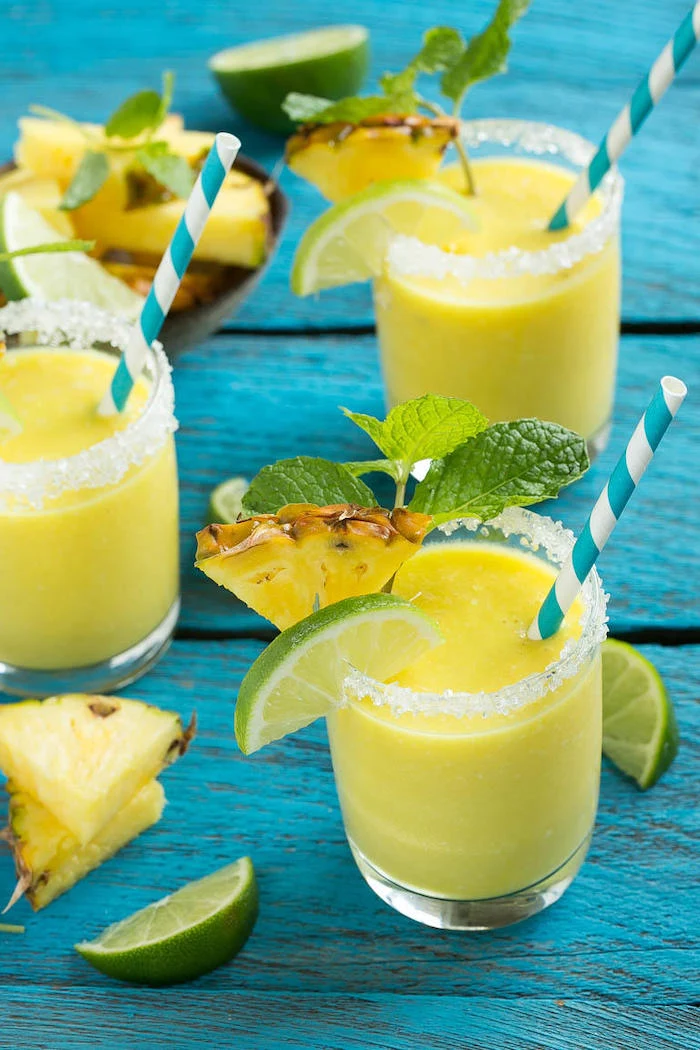
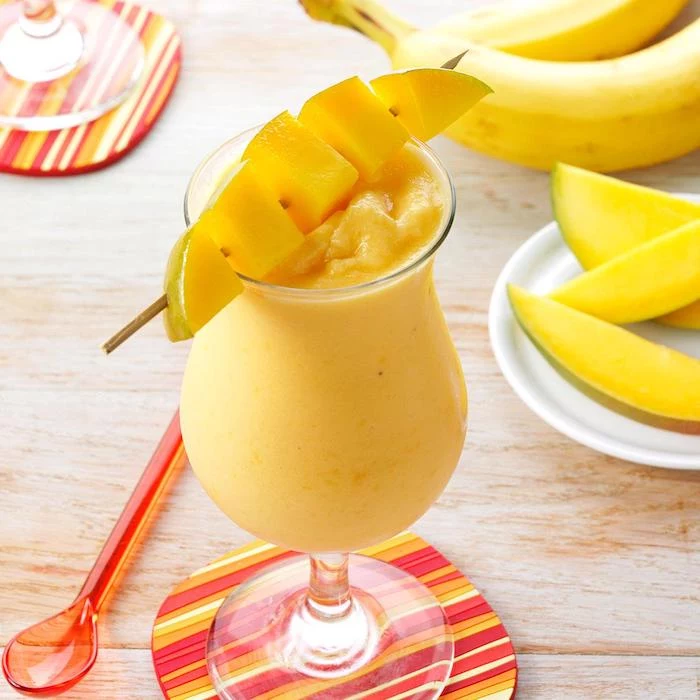
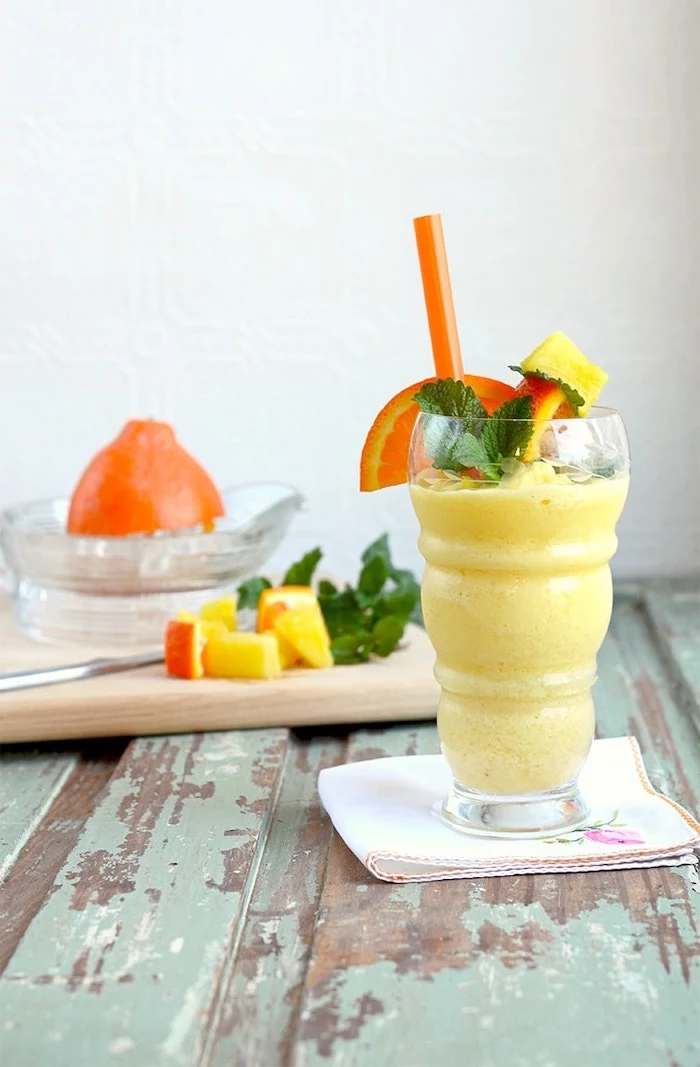
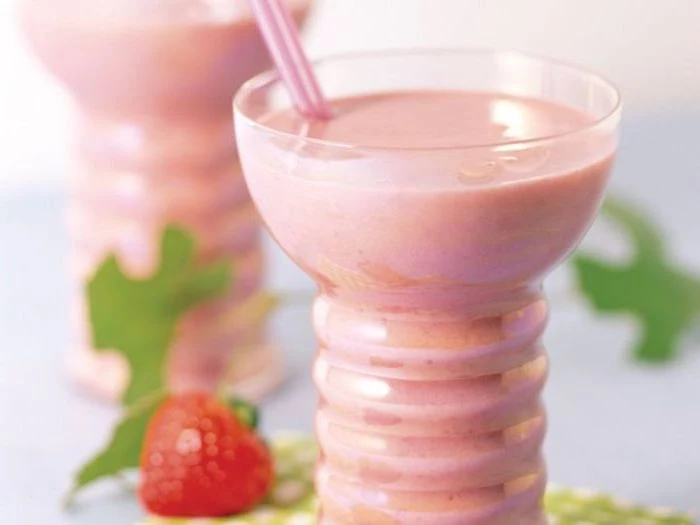
Plain Greek Yogurt: Offers a massive protein punch and a tangy flavor that balances sweet fruits. Fage or Chobani are great thick options.
Silken Tofu: A brilliant vegan alternative. It’s virtually tasteless and adds incredible creaminess and a solid protein boost without any dairy or grit.
For a creamy, protein-packed smoothie, both are excellent choices, depending on your dietary needs.
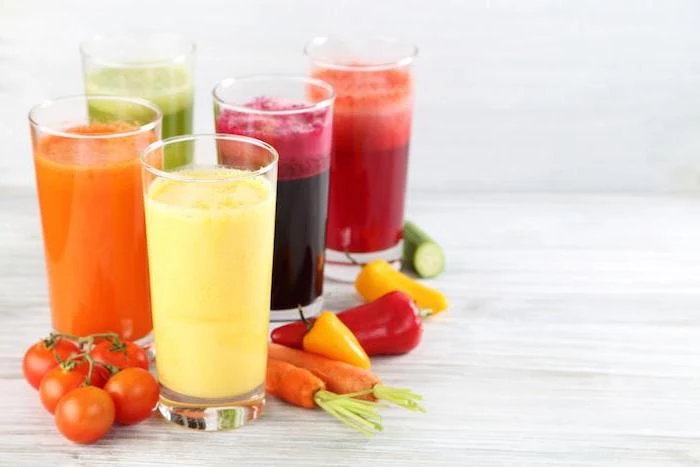
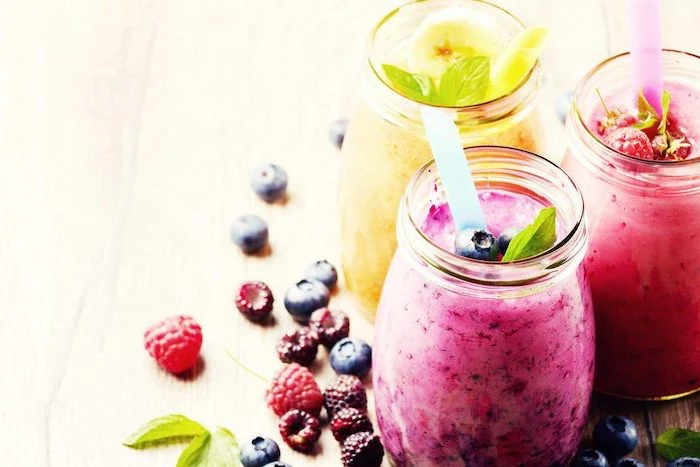
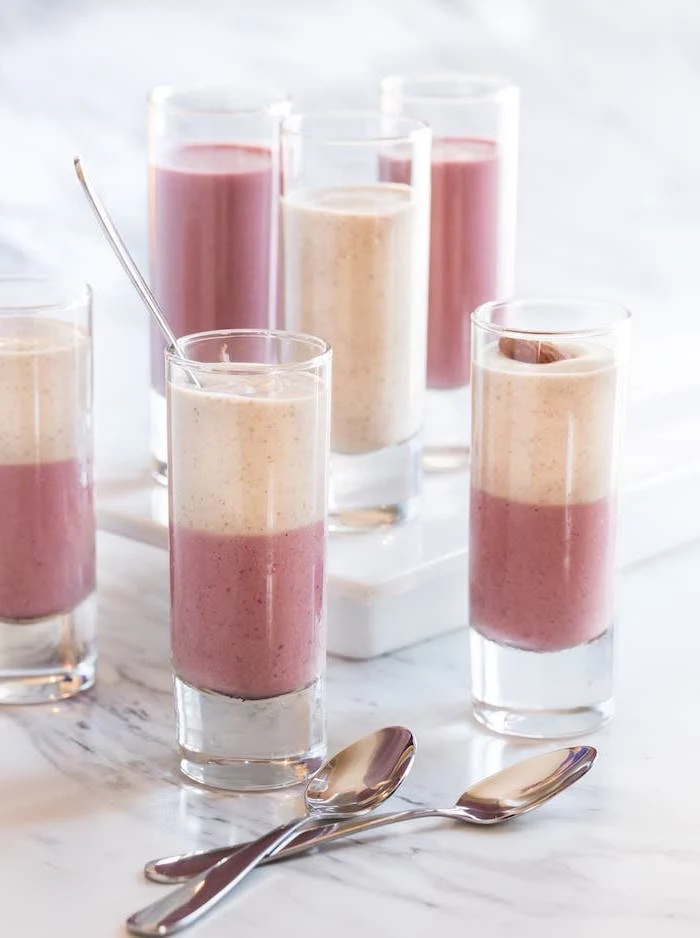
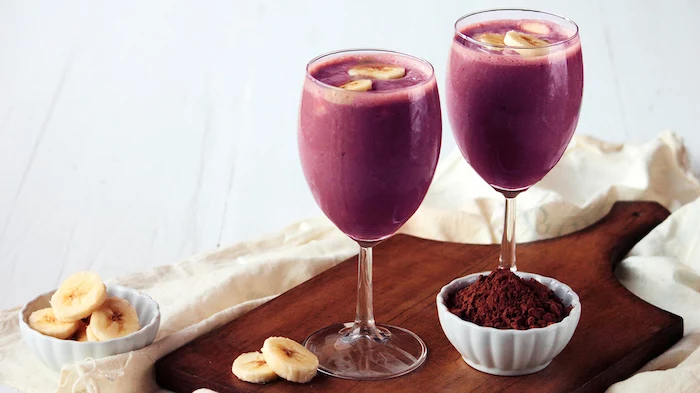
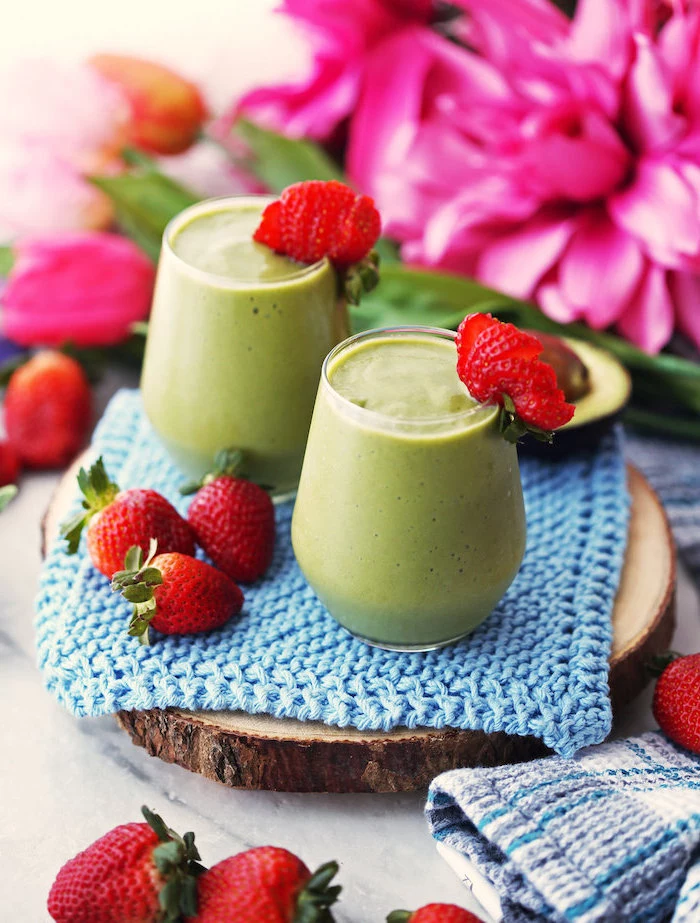
Don’t underestimate the power of salt.
It sounds strange, but a tiny pinch of sea salt doesn’t make your smoothie salty. Instead, it enhances the sweetness of the fruits and brings out more complex flavors, especially in chocolatey or nutty blends. It’s the secret ingredient used by chefs to make flavors pop.
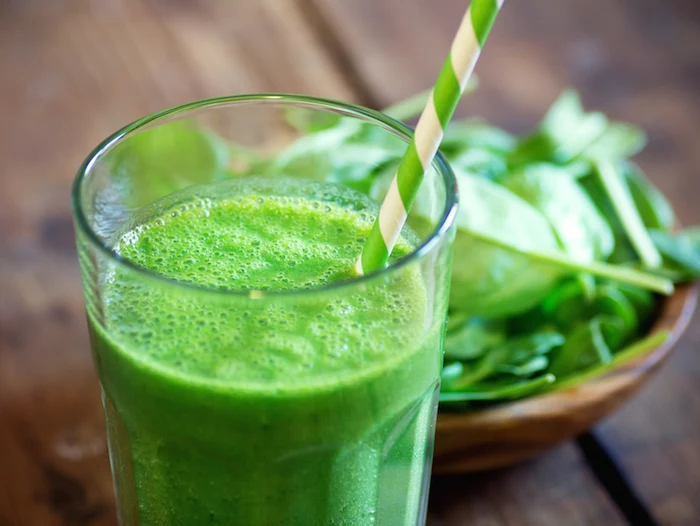
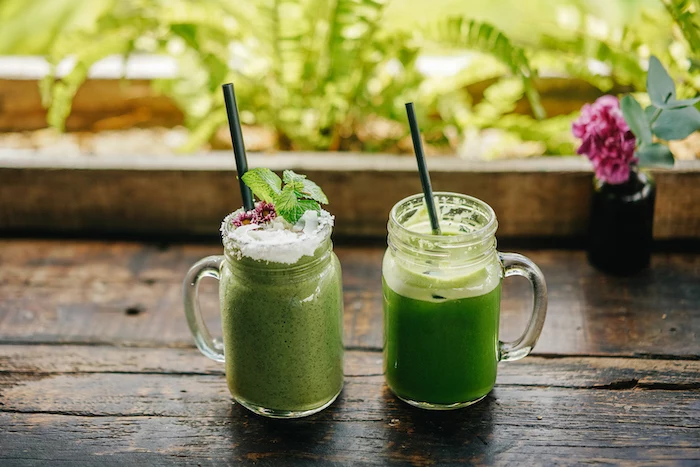
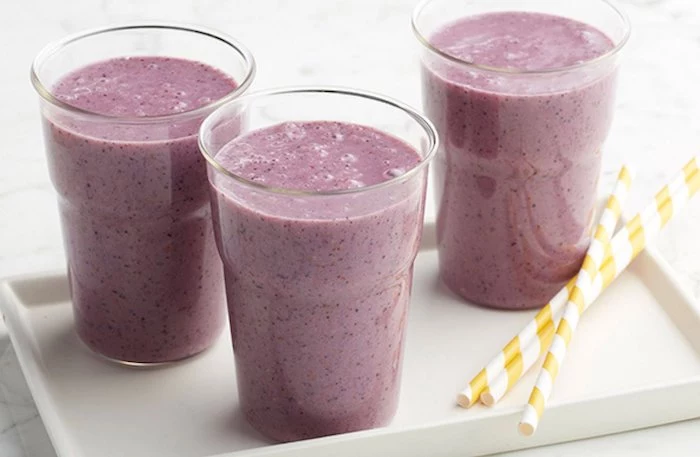
A great smoothie engages more than just taste. Think about texture. Adding a few tablespoons of rolled oats adds satisfying heft and soluble fiber, while a sprinkle of hemp hearts or cacao nibs on top provides a delightful crunch, transforming your drink into a more dynamic eating experience.










